Architecture Moments™ 7: Notre Dame Cathedral

My Romantic Date with a Historic Icon
Love at first sight. This may sound like a cliché, yet this was what I truly felt the instant I met her. She was one of the most gorgeous jewels I've ever seen. I used to only read, study, and admire her in books during my student days in architecture school. And I kept on fantasizing that one day I'd get to personally be in her presence.
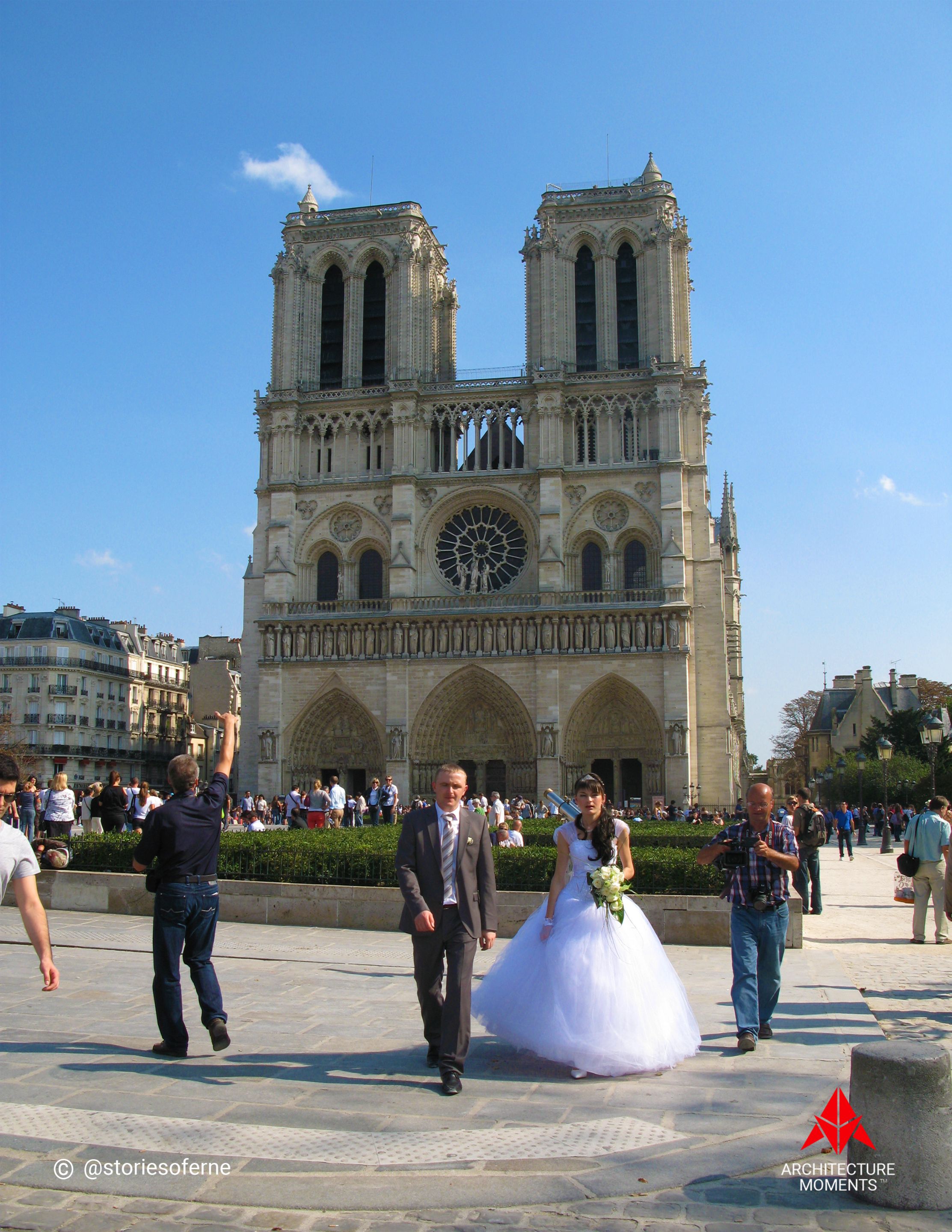
That momentous occasion finally arrived. And I couldn't believe my eyes when there she was, within my grasp - the iconic Notre Dame Cathedral. In Episode 7 of Architecture Moments™, we're going to journey to what's considered to be the most romantic city in the world: Paris. So, are you ready to fall in love? Follow me as we unravel the mysteries as to why this stunning piece of historical architecture in France is beloved by many.
Trove of Interesting Facts
The Notre Dame Cathedral has countless tales embedded within its ancient walls. Thus, this publication would simply not be sufficient to accommodate all of them. However, it would help to be aware of a few valuable points for our general knowledge, wouldn't it?
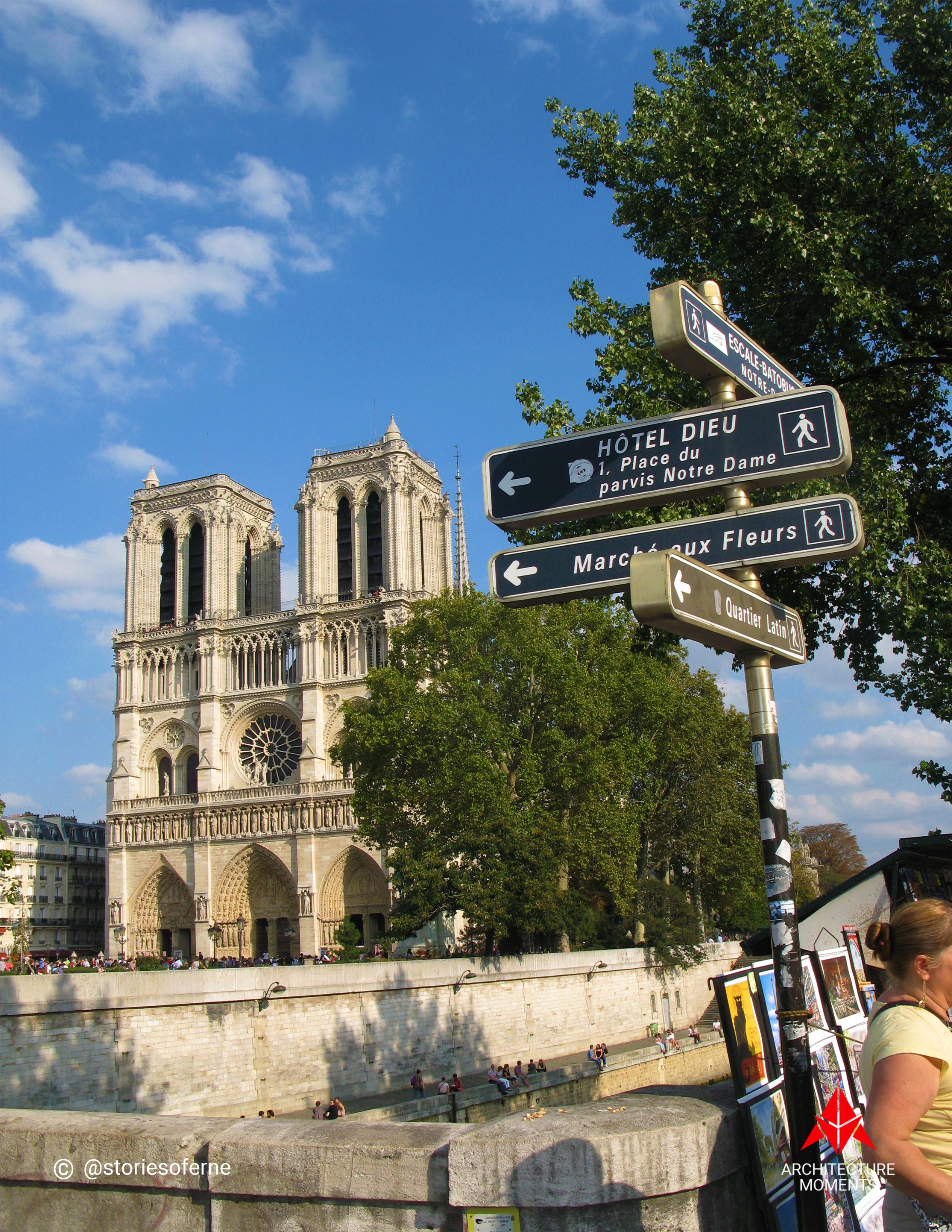
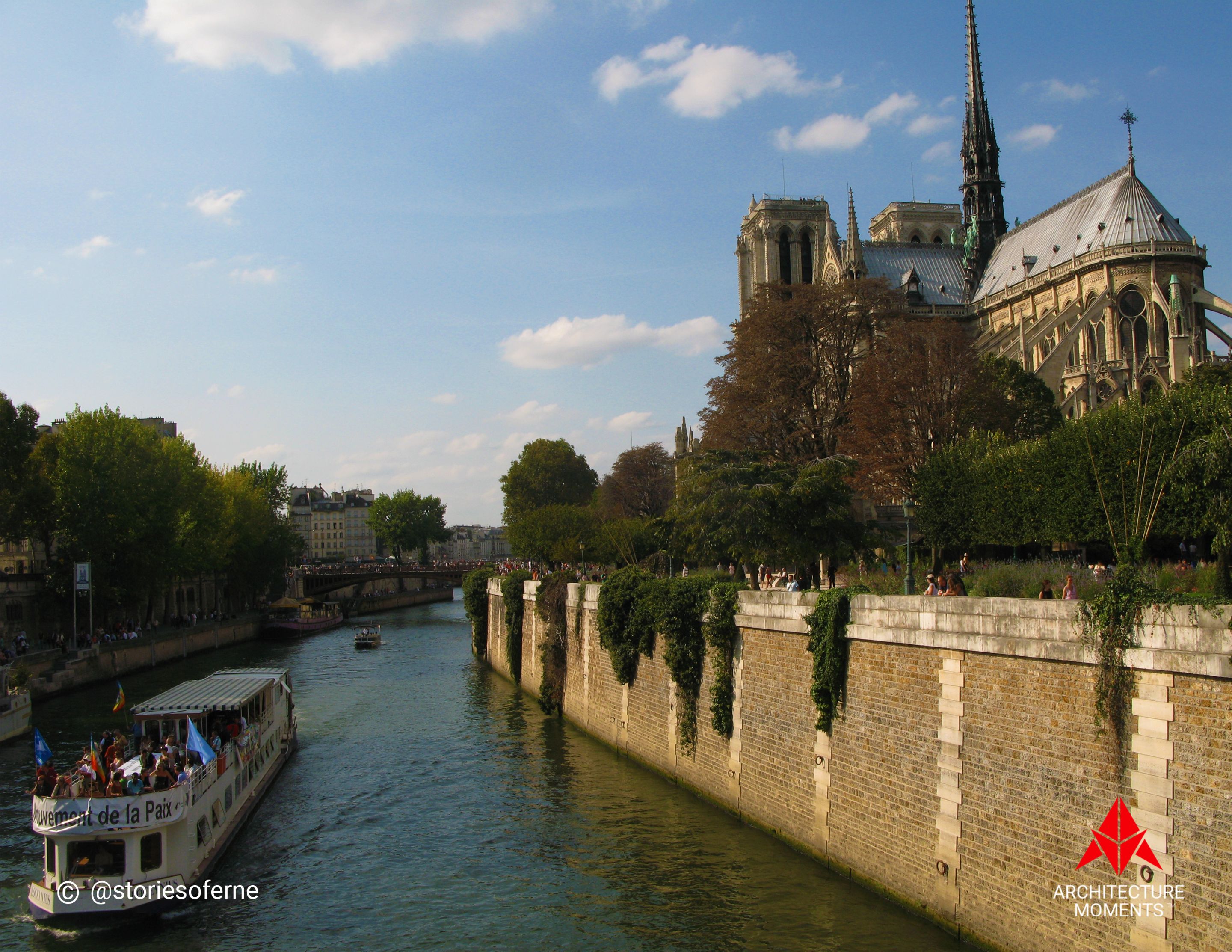
Okay. Before we indulge ourselves deeper into this popular landmark's architectural narratives, here are few vital nuggets of information linking this sacred building's significance to French history, culture, and tourism:
The complete French name of the Notre Dame Cathedral is Notre Dame de Paris, which means "Our Lady of Paris" in the English language. (That's why I addressed the building as "SHE".)
The Notre Dame Cathedral is currently the most flocked tourist attraction in Paris, having more visitors than the likewise famous Eiffel Tower.
The entire complex of the Notre Dame Cathedral sits on top of the Ile de la Cité, a natural island in the Seine River and above an ancient civilization called a Gallo-Roman city known as Lutetia. The existing church may also have been developed above a prehistoric temple as evidenced by a sculpted altar devoted to other deities eons ago.
Napoleon Bonaparte has been crowned Emperor at the Notre Dame Cathedral on December 2, 1804.
The Notre Dame Cathedral was the prime setting for Victor Hugo’s classic historical novel entitled "The Hunchback of Notre-Dame", which was published in 1831. This has enormously catapulted the landmark's epic fame.
28 stone statues of biblical kings inside the Notre Dame Cathedral were severely mutilated and aggressively demolished by a disorderly crowd of people during the French Revolution.
A tragic fire engulfed the Notre Dame Cathedral on April 15, 2019. The blazing inferno lasted several hours and took the cooperation of approximately 400 firemen to terminate. (I was fortunate to have visited this place before this tragedy.)
In 1991, the Notre Dame Cathedral was officially included in the prestigious roster of UNESCO World Heritage Sites and was designated as a significant cultural landmark on the global stage.
The Notre Dame Cathedral is the official seat of the Archbishop of Paris and is an important religious center for the Catholic faith.
And the list goes on.
A Sumptuous Feast of Architecture
It's an Architect's dream to travel to the Notre Dame Cathedral. You see, this religious edifice is the world's finest example of the French Gothic architectural style. And aside from just researching about this built environment on the countless pages of academic curriculums, nothing beats the onsite investigations of such fabulous works. In other words, no written literature regarding buildings is as effective as the actual human experience of these said spaces. For scientists, this would be equivalent to examining a live specimen under a microscope. Makes sense?
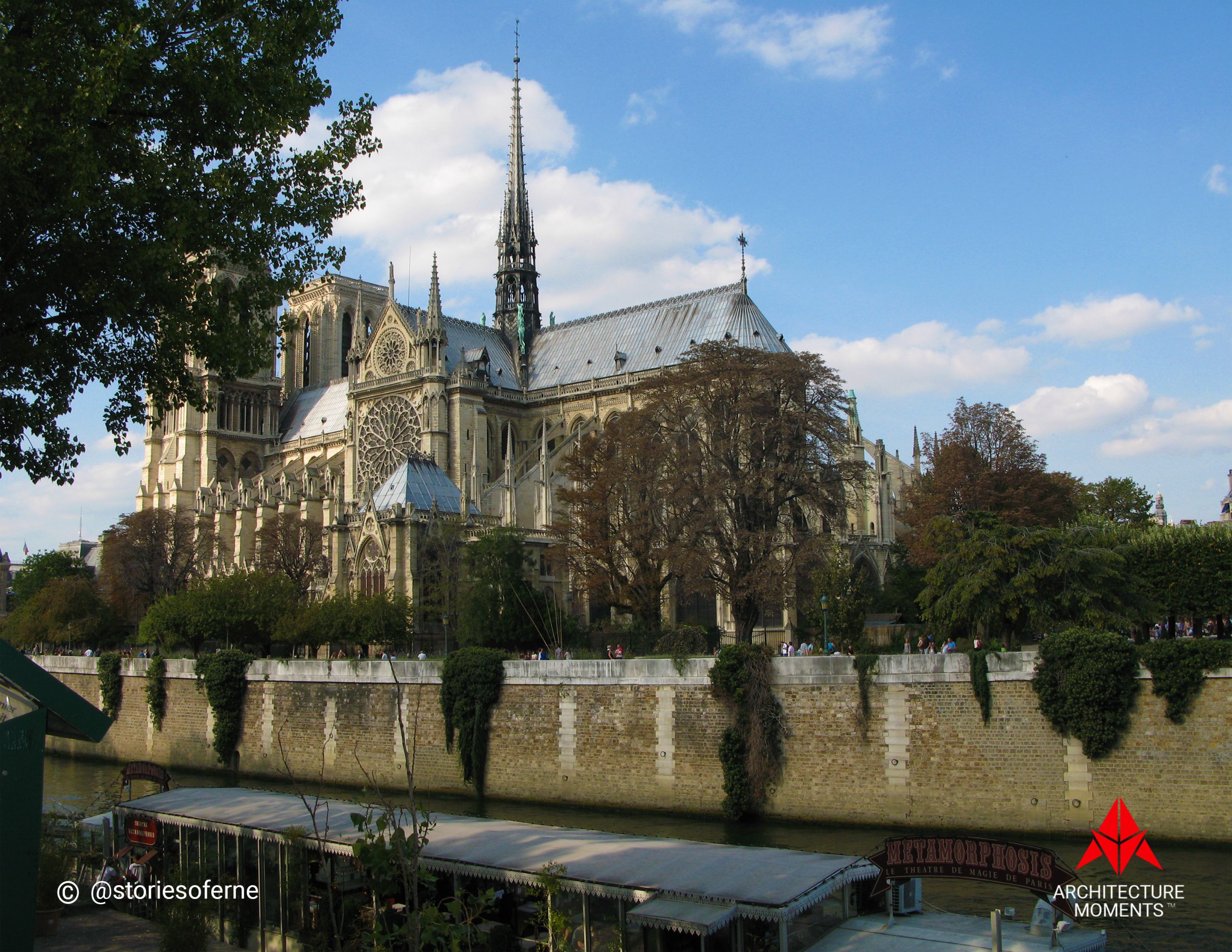
"Am I really here?" This was what I usually whisper to myself whenever I physically appear in locations that were previously mere objects of personal daydreaming. Walking around the church grounds, vivid memories of my university classes in the history of architecture were immediately ignited, hence recalling a barrage of ancient data about this sacred building.
The Notre Dame Cathedral was initiated in 1160 by Maurice de Sully, right after his appointment as Bishop of Paris. This religious monument is the epitome of naturalism depicting Gothic sculptures and the artistic representations of stained glass. Interestingly, this architectural character was the enhanced version of the previous style sporting Romanesque characteristics. Surviving for centuries, this church stood the test of time until she sustained heavy damages during the French Revolution. It was not until the 1840s that a complete overhaul began where comprehensive renovations were implemented to the existing landmark by the restoration specialist Eugene Viollet-le-Duc.

Construction of the cathedral commenced in 1163 and further continued into the later centuries where the apse, choir, nave, rose windows, and towers were completed around 1250. The following decade also saw the participation of Jean de Chelles and Pierre de Montreuil, the architects responsible for working on the transepts and clerestory windows embracing the Rayonnant Gothic architectural style. To give you a basic idea of the physical dimensions, the church is approximately 128 meters (420 feet) long with a nave around 12 meters (39 feet) wide.
Impressions of the West Facade
Approaching the building from the western hemisphere, you cannot help but notice the 2 iconic towers, the most recognizable architectural feature of the cathedral. This particular side was probably the most famous and most extensively promoted facade to represent the church as shown on books, articles, television, the Internet, and other popular media (thus, also becoming my favorite choice for this post's cover image, haha).
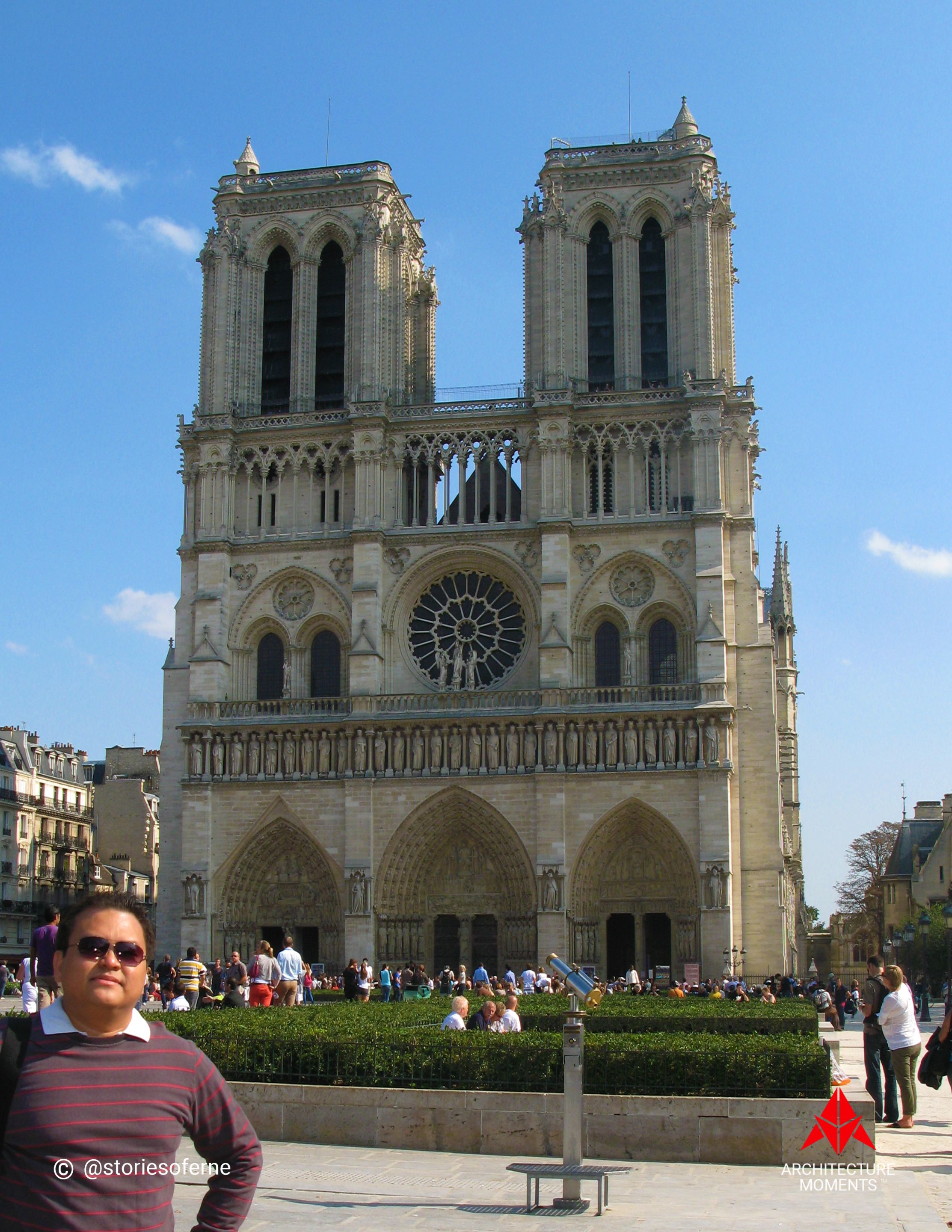
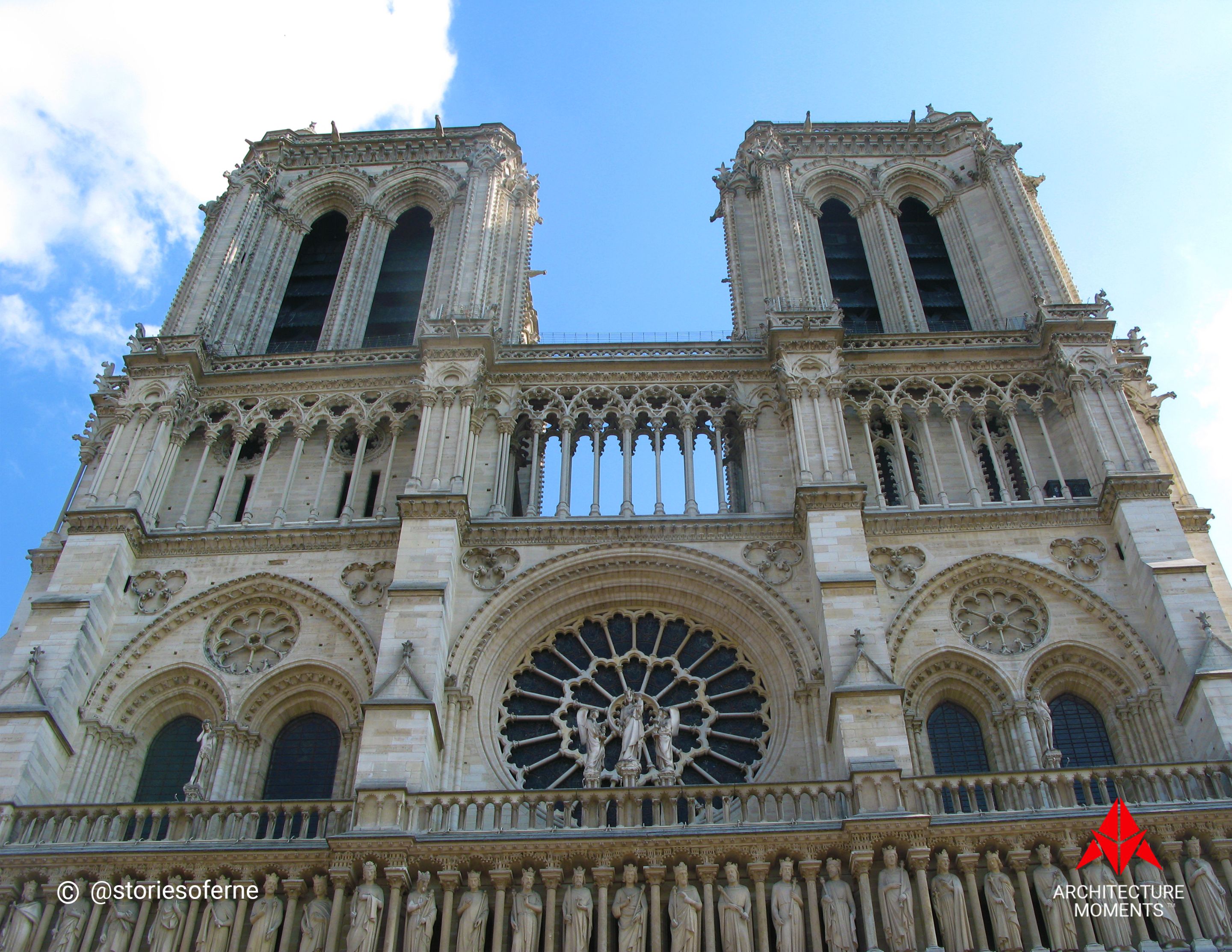
I remember moving hastily around the adjacent courtyard in different directions as my wide-opened eyes were busy glancing at the marvelous carvings, statues, patterns, sculptures, and intricate details at the facade in front of me. "It was indeed a glorious masterpiece of artistic craftsmanship that seemed surreal at first yet, was simply authentic in every aspect of its imaginative genius." Chances are, this would be how I'd describe that cathedral's incredible frontage with my own words.
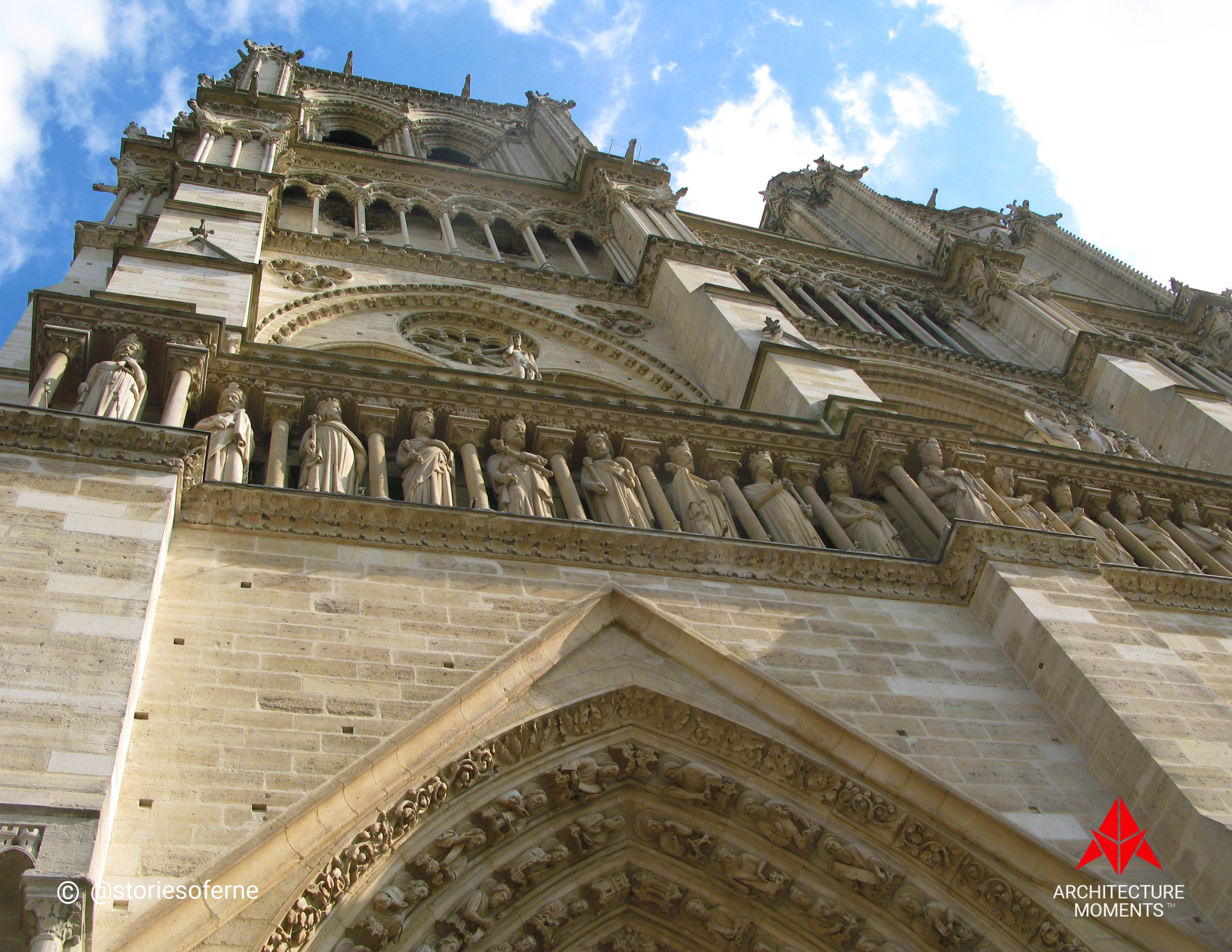
The western facade roughly measured 41 meters (134 feet) in width and 63 meters (206 feet) in height. The central portion exhibited a huge rose window, 9.6 meters (31 feet) in diameter, the smallest of the cathedral's three rose windows. In the middle was a statue of the Virgin Mary with Child. Directly below the balustrade was the Gallery of Kings, highlighting the twenty-eight (28) generations of the Kings of Judah. These were the same statues that were damaged during the French Revolution but now have been restored to their full splendor. Underneath this level were four buttresses each with a niche housing a statue. St. Stephen, St. Denis, and the allegories of the Synagogue and the Church were all featured here. Additionally, between these buttresses were portals namely the Portal of St. Anne (right), the Portal of the Virgin (left), and the central one, the Portal of the Last Judgment, the biggest of them.
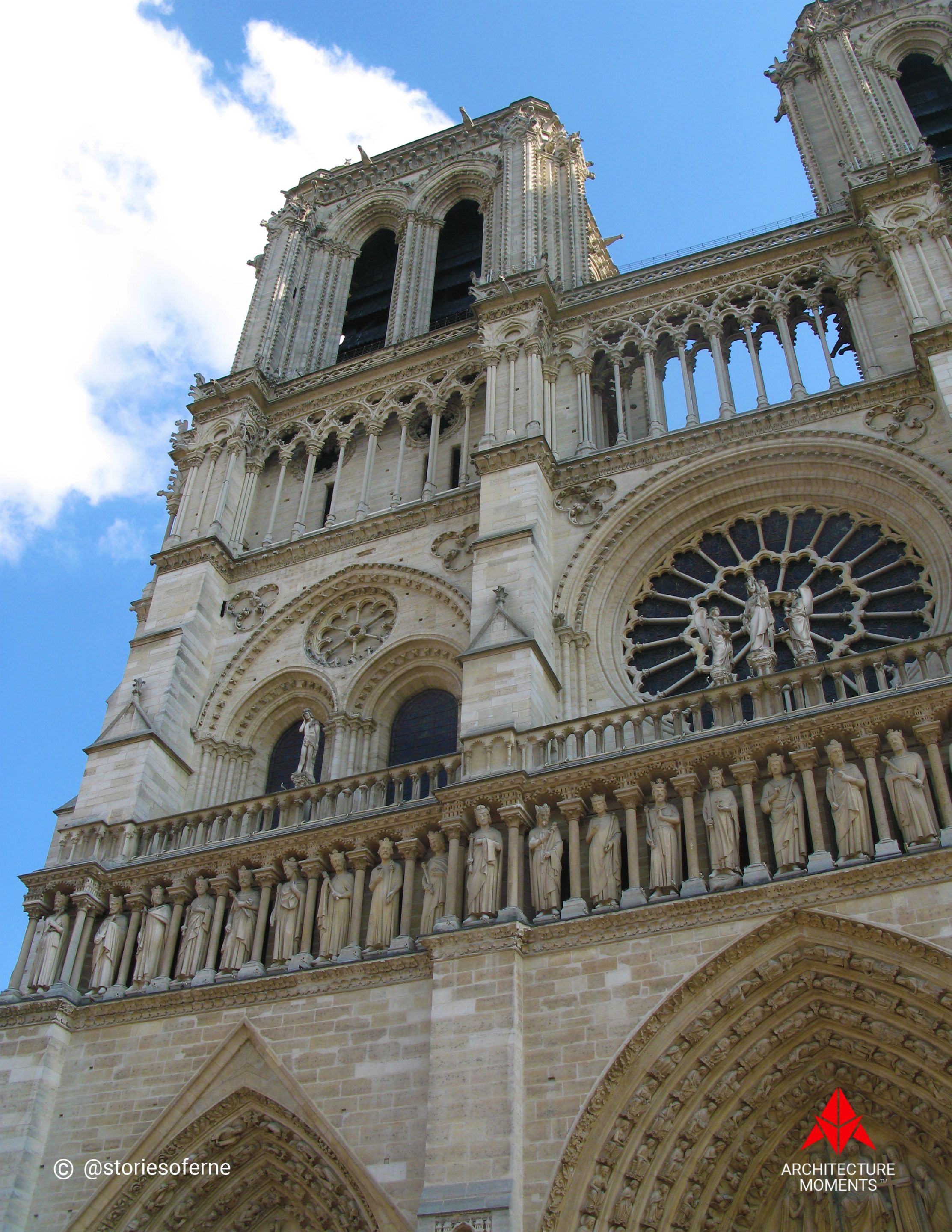
I was still standing on the outdoor grounds at that moment and was on my way to entering the church interior, however, my emotional outbursts were already overflowing. Would you have reacted the same way?
Decoding the Portal of the Last Judgment
Of all the ornamental elements on this side of the cathedral, this was the apple of my eye. Just look at that doorway! Now, who wouldn't be impressed by that? I merely had my eyes deeply glued to the various objects encapsulated within its defining pointed arch.
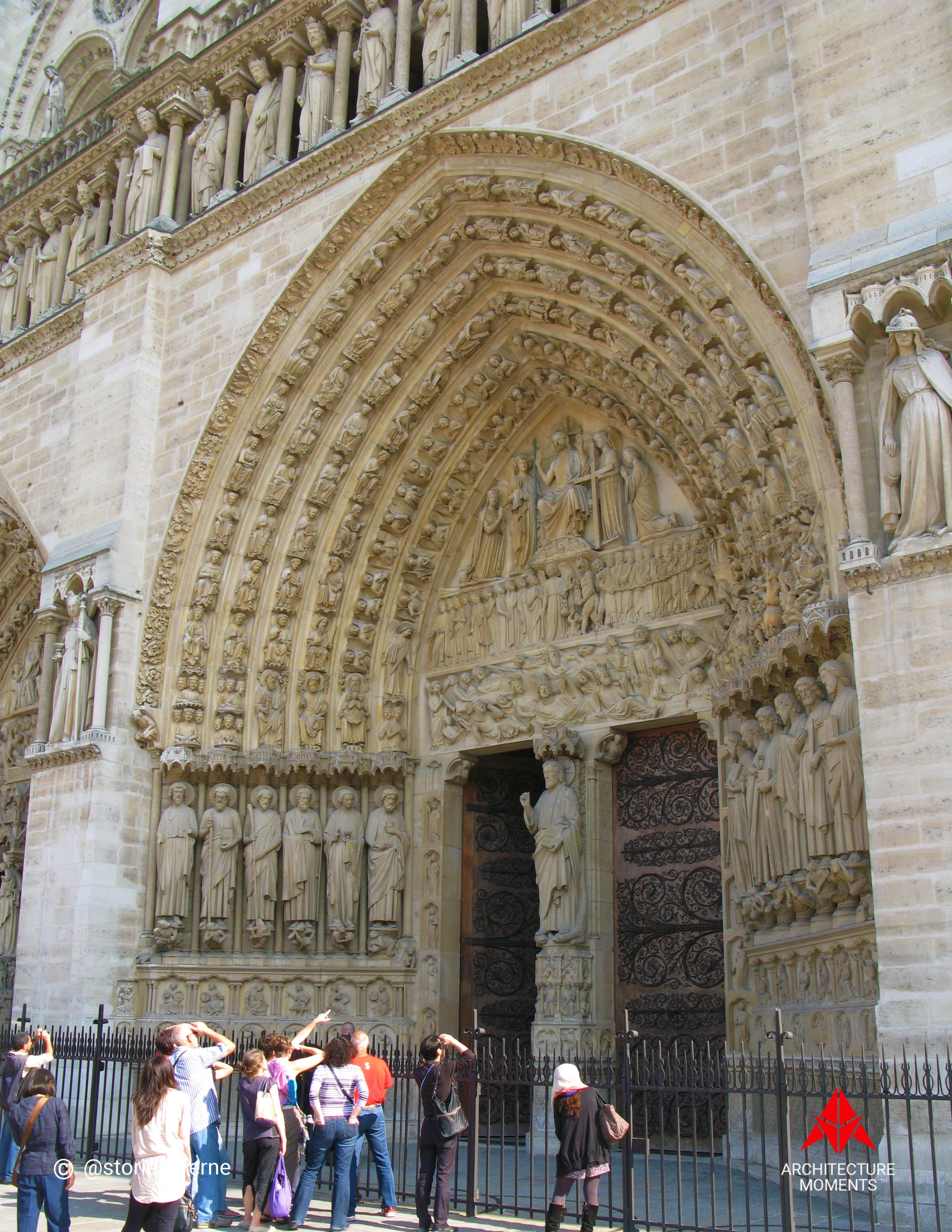
The Portal of the Last Judgment demonstrated an interesting narrative rich in symbolism. It would have been difficult to interpret the meanings of those details if not for tour guides who were also present in the specific location. I'll summarize the story for you.

In a nutshell, the lower area exhibited the dead being brought back to life from their burial chambers. On the upper portion, archangel Michael was assessing their souls. On the left side, the chosen people, who served God and their fellowmen, were directed to the kingdom of heaven. While on the right side, the condemned individuals were led by the evil one towards eternal damnation. And on the topmost space was Jesus Christ seated majestically on His glorious throne.
Revelations of a Heavenly Interior
It was about time to access the inner sanctum of the Notre Dame Cathedral. I could only say "WOW!" the second I stepped inside. As opposed to the hot weather outside, the cool air within the church greeted me with a refreshing caress.

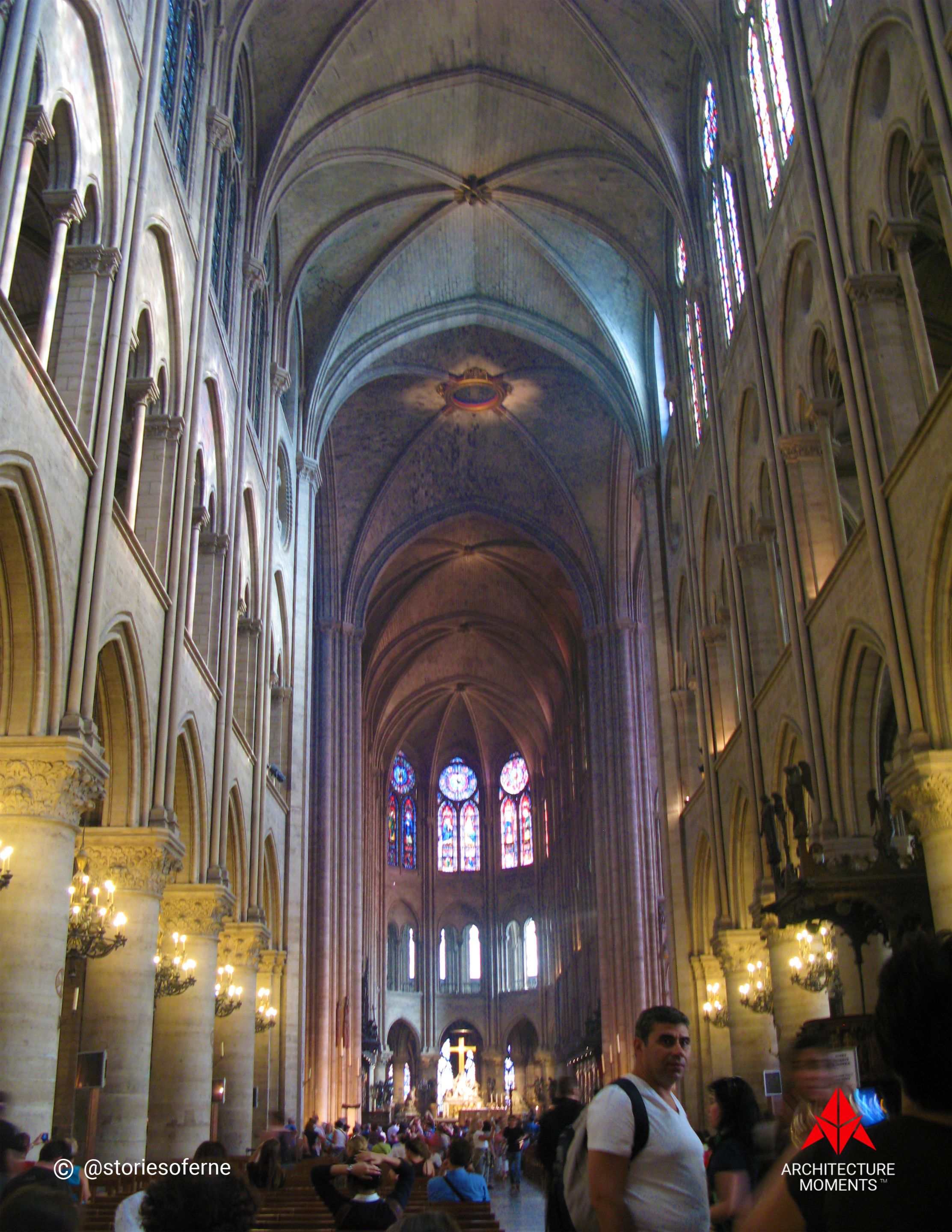
It was as if an angel held me by the hand and welcomed me to the gates of the divine kingdom. All of a sudden, the numerous threads of hair on my skin literally stood up, OMG!
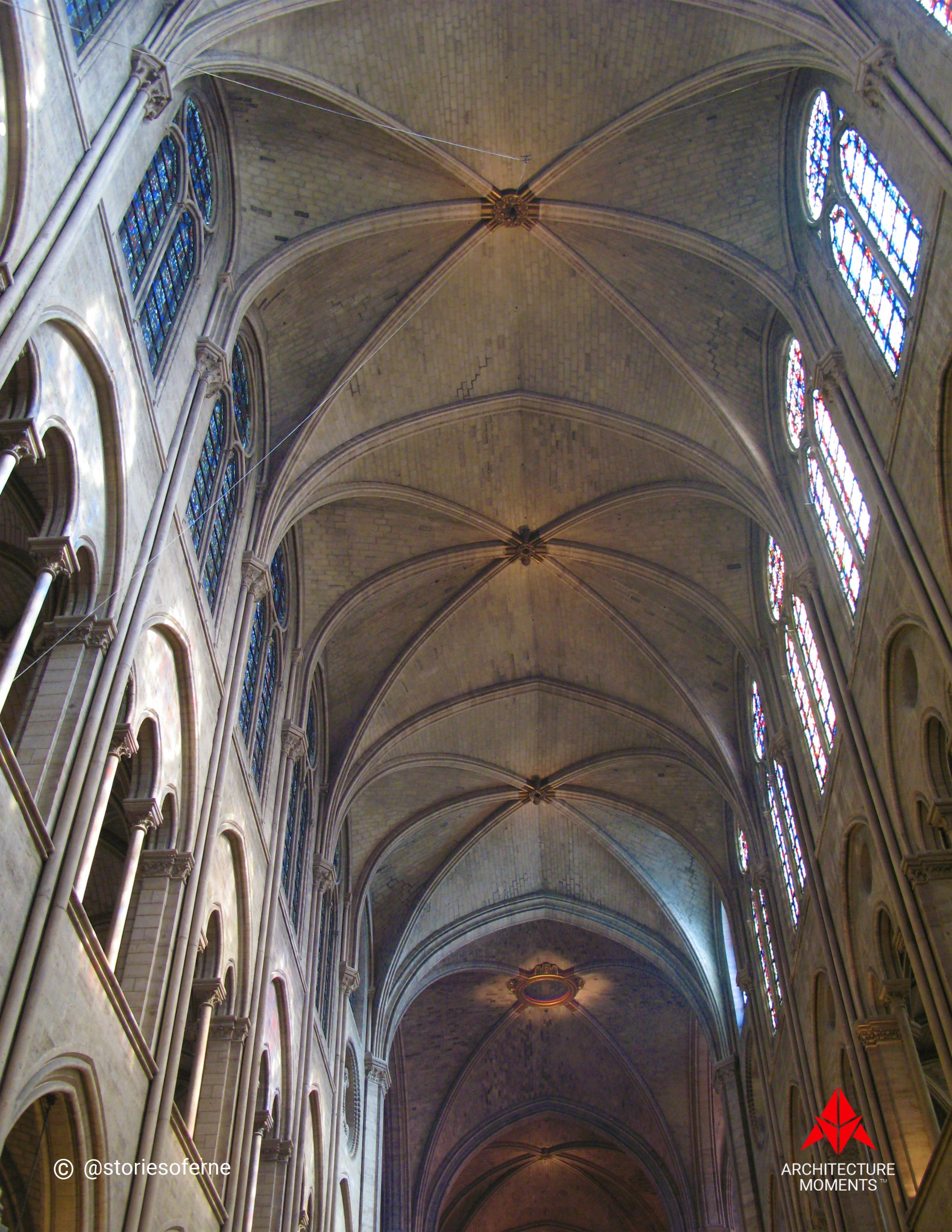
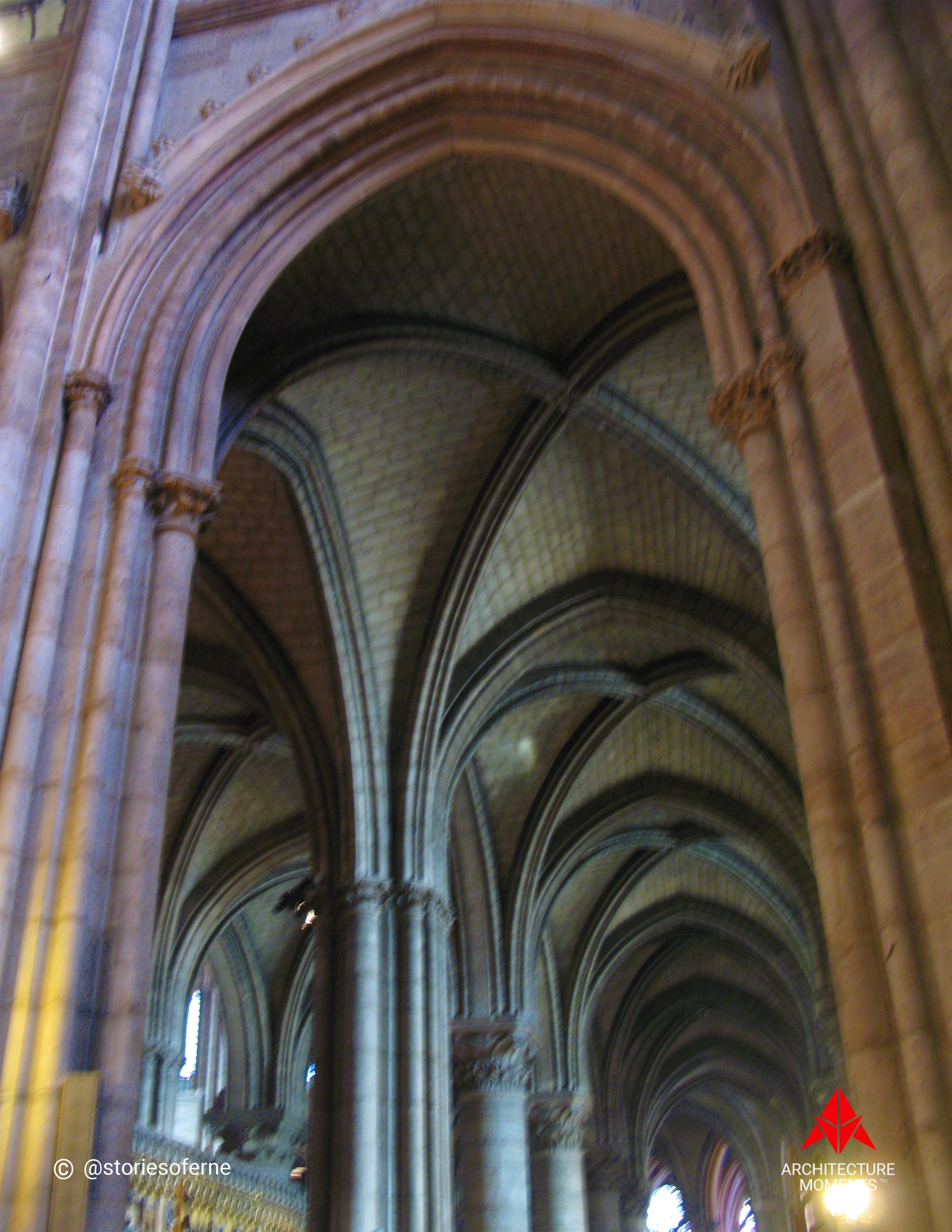
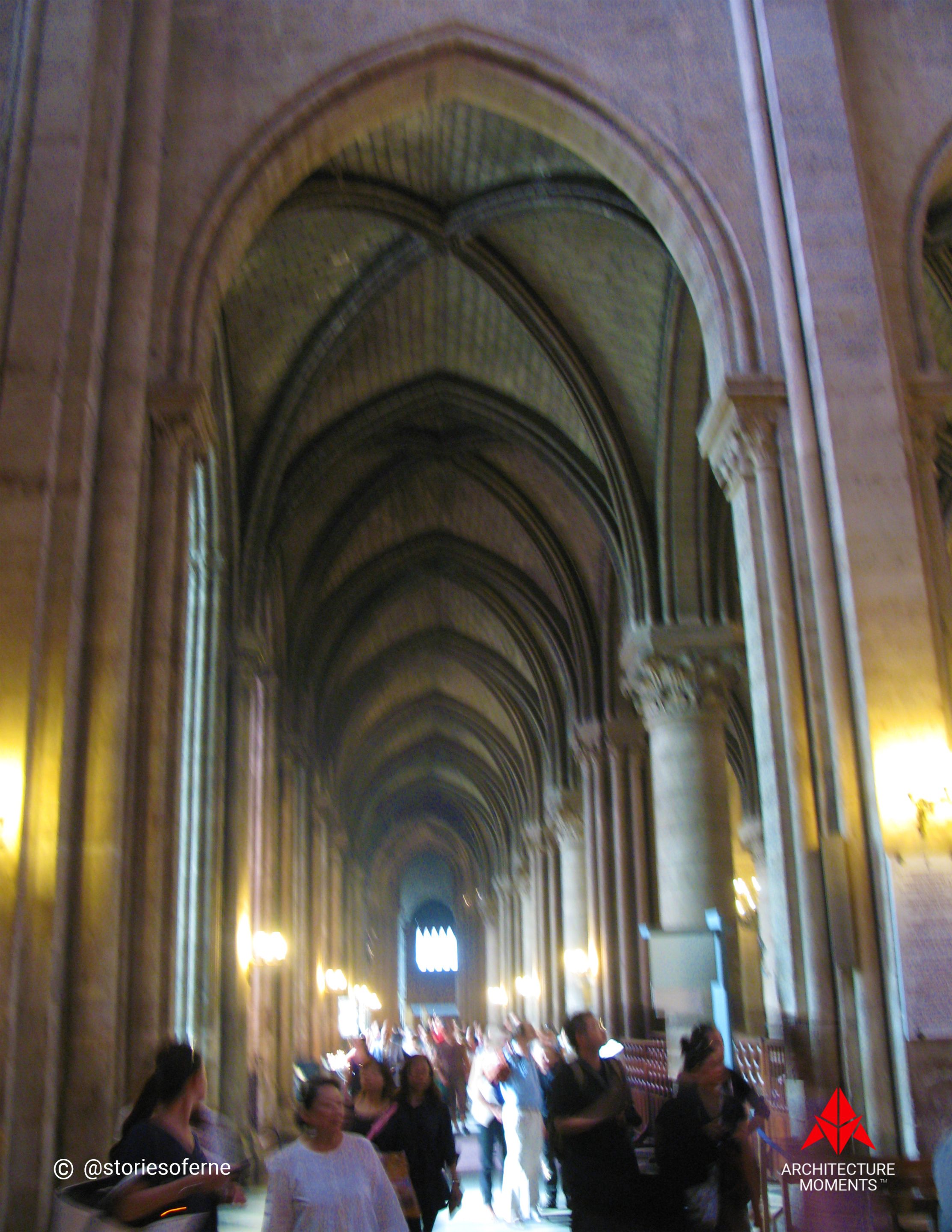
We might underestimate the construction methods of the ancient world, however, the medieval stonemasons perfected the skill of building vaulted ceilings like the ones found here. Aside from their aesthetic characteristics, these architectural features were structurally proven to protect the church interior in case the roof would collapse during fires, accidental damages, or other mishaps. So, thank God for state-of-the-art inventions like these.
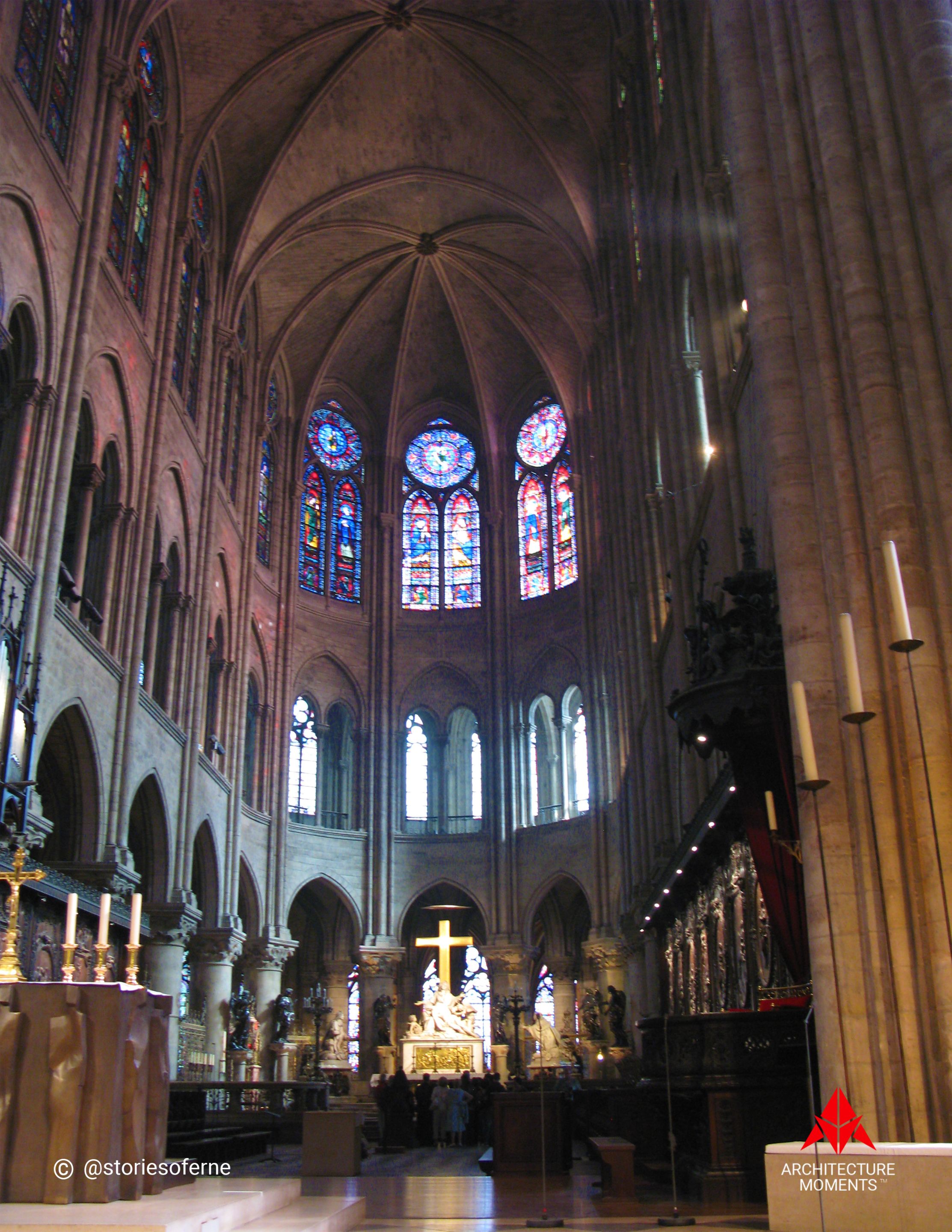
The High Altar inside the Notre Dame Cathedral was a spectacular location I didn't overlook of course. It featured the " Descent from the Cross", an exquisite artwork crafted by the renowned French sculptor Nicolas Coustou. On its sides were also the kneeling statues of Louis XIII (right) and Louis XIV (left).
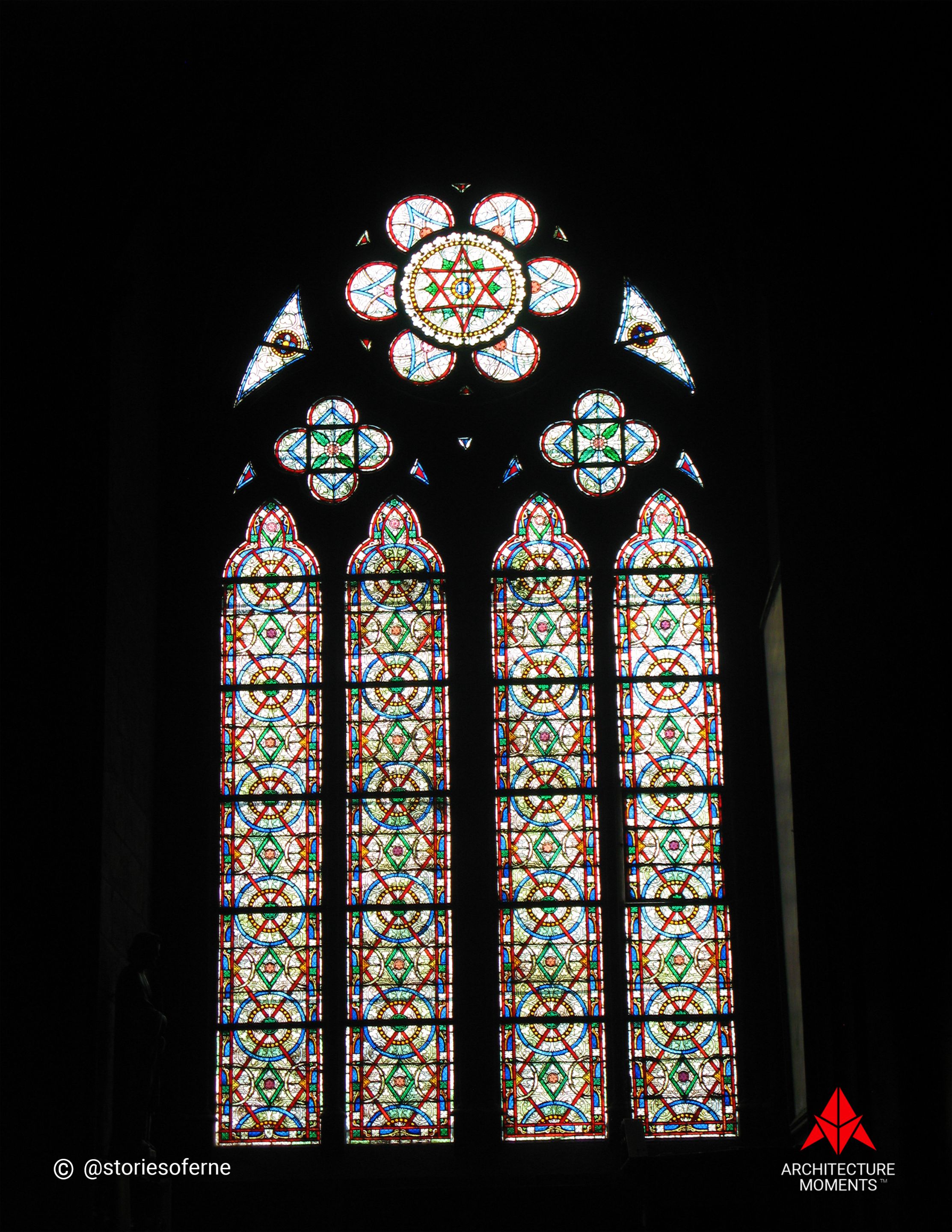

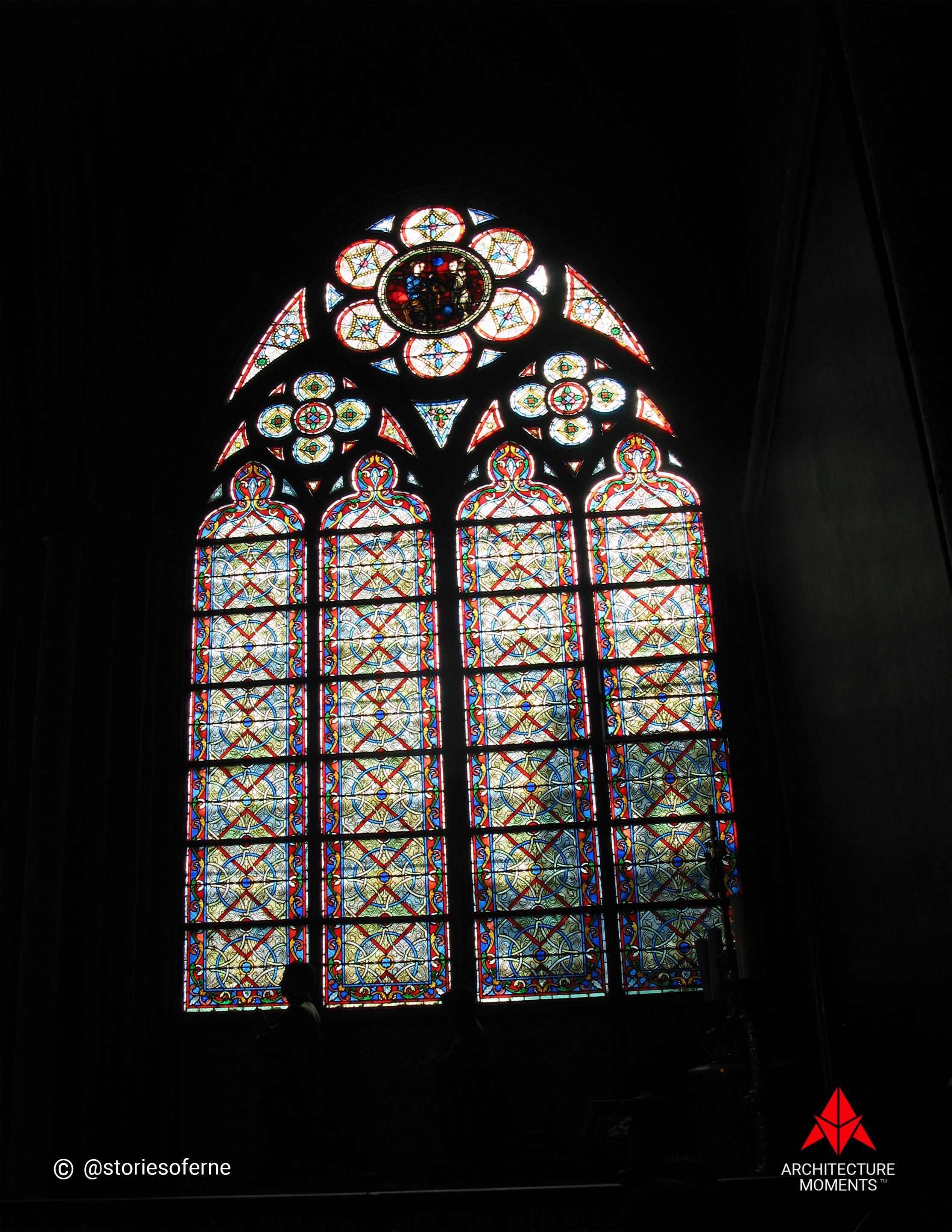
Aside from the prominent rose glass windows, there were other stained glass windows inside the cathedral that shifted me to another dimension. Your jaw would simply drop. It was also the perfect time of day when the rays of the sun while shining through the various colored glass panes, emitted an out-of-this-world spectacle.
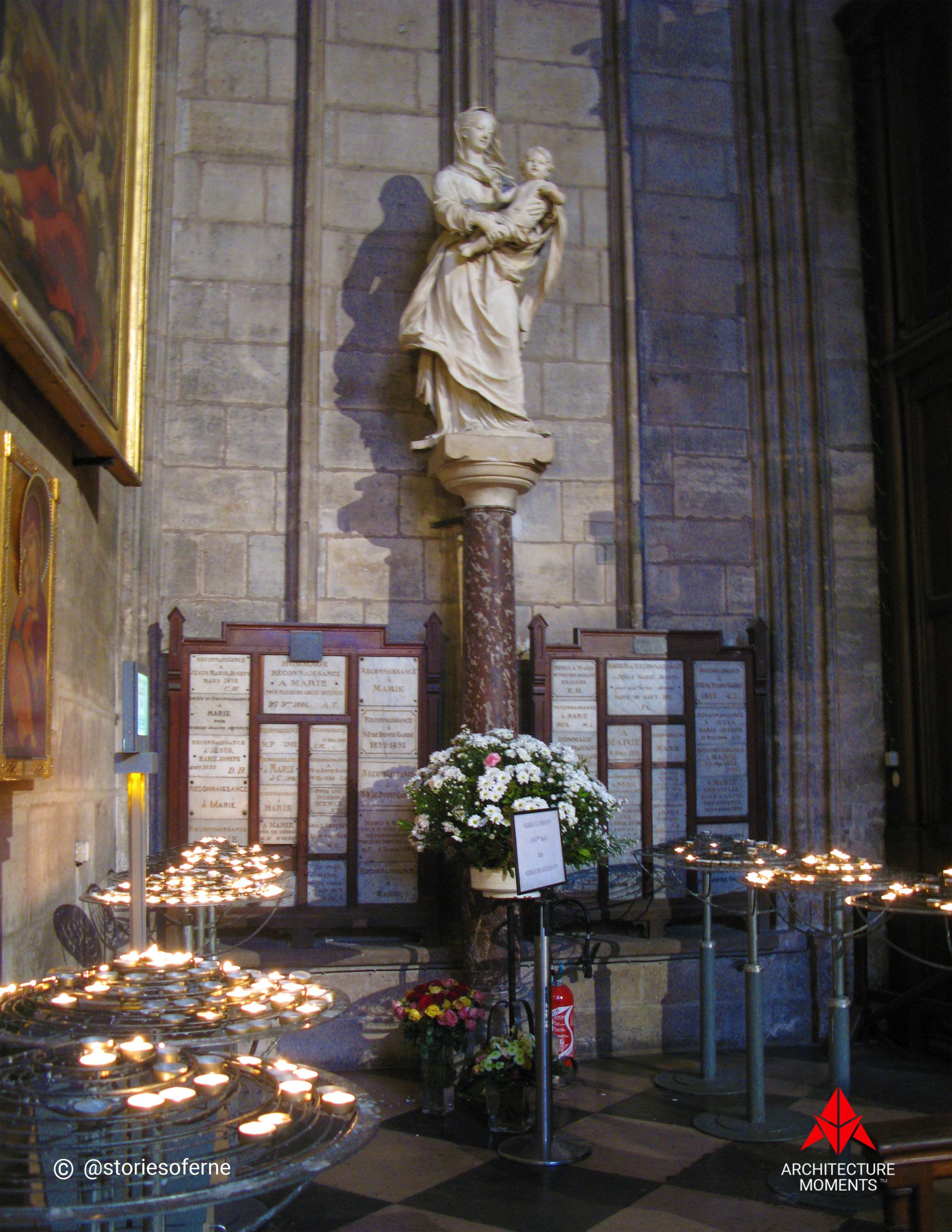
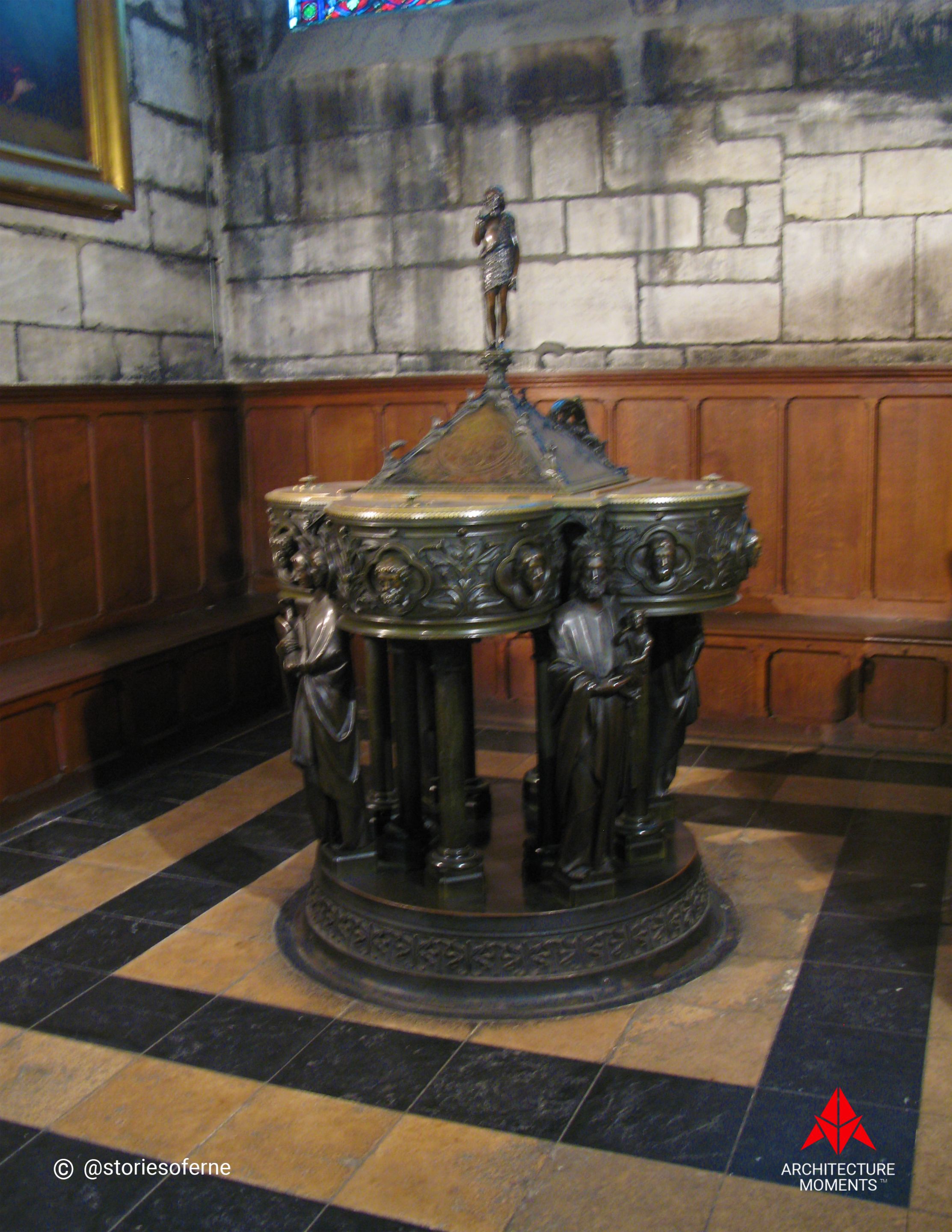

This church was fundamentally constructed of building materials like limestone, wood, iron, and lead, similar to the ones implemented for the famous Chateau of Versailles. There were several magnificent details of architecture everywhere and the interior elements, in all their splendor, definitely showcased the finest skills of craftsmanship during that period.
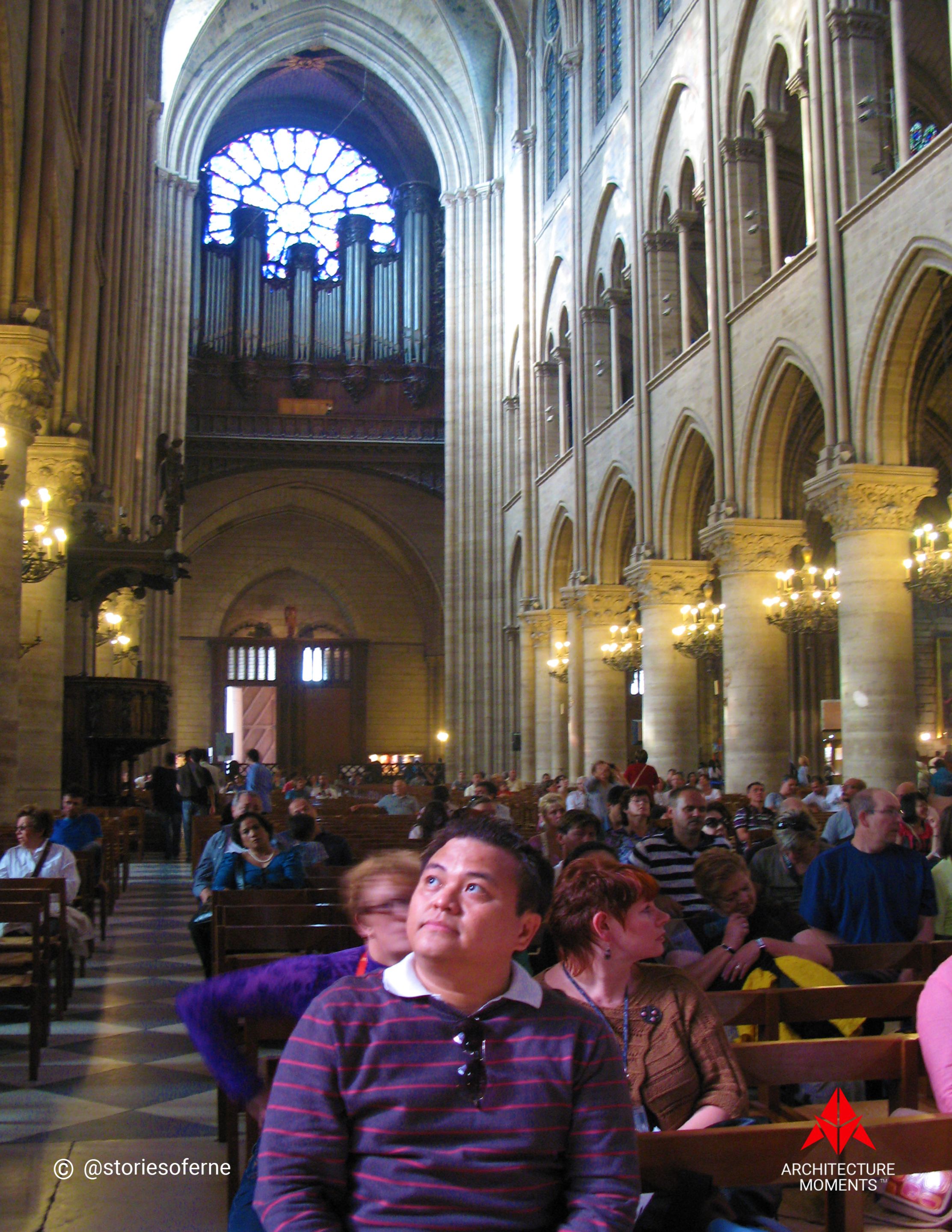
While inside the cathedral, I had to linger in one of the many benches to continue my observations of the marvelous surroundings. Pinching myself lots of times while being seated, and whether it was visual, auditory, olfactory, or touch, my human physicality was busy absorbing all the sensual pleasures nearby. I had an absolutely overwhelming experience of history while being there.
Hypnotic Symmetry of the Rose Windows
Recognized as one of the greatest masterpieces in the history of Christianity, the three rose windows of the cathedral will certainly leave you speechless. From its intricately carved stone details on the exterior to its mesmerizing effects of stained glass panels when viewed from the inside, I couldn't stop staring at this majestic beauty. For any ordinary spectator, you will tend to wonder how on Earth did they craft such an extremely detailed piece of art. It must have taken lots of artisans, craftsmen, and sculptors countless months to successfully achieve a feat like this.
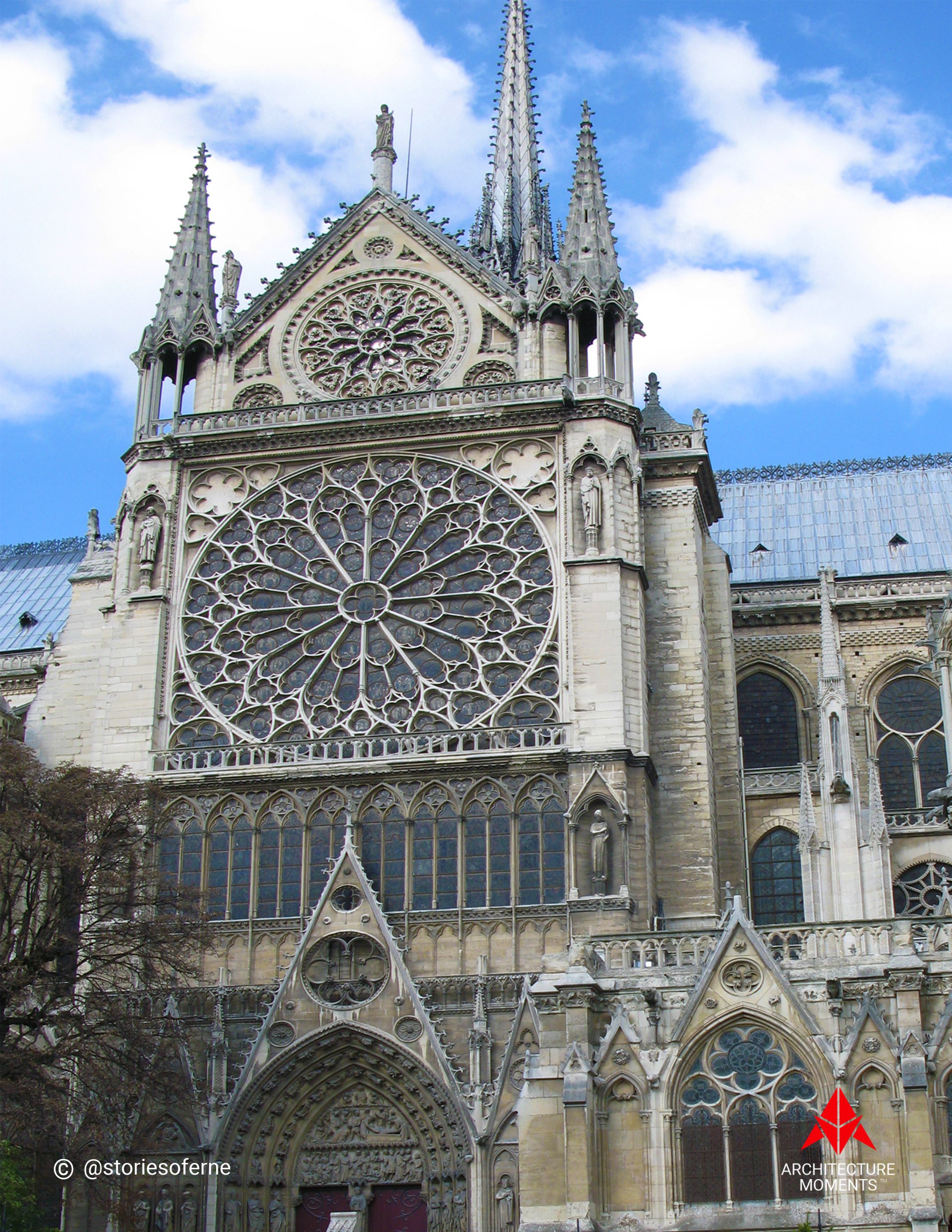
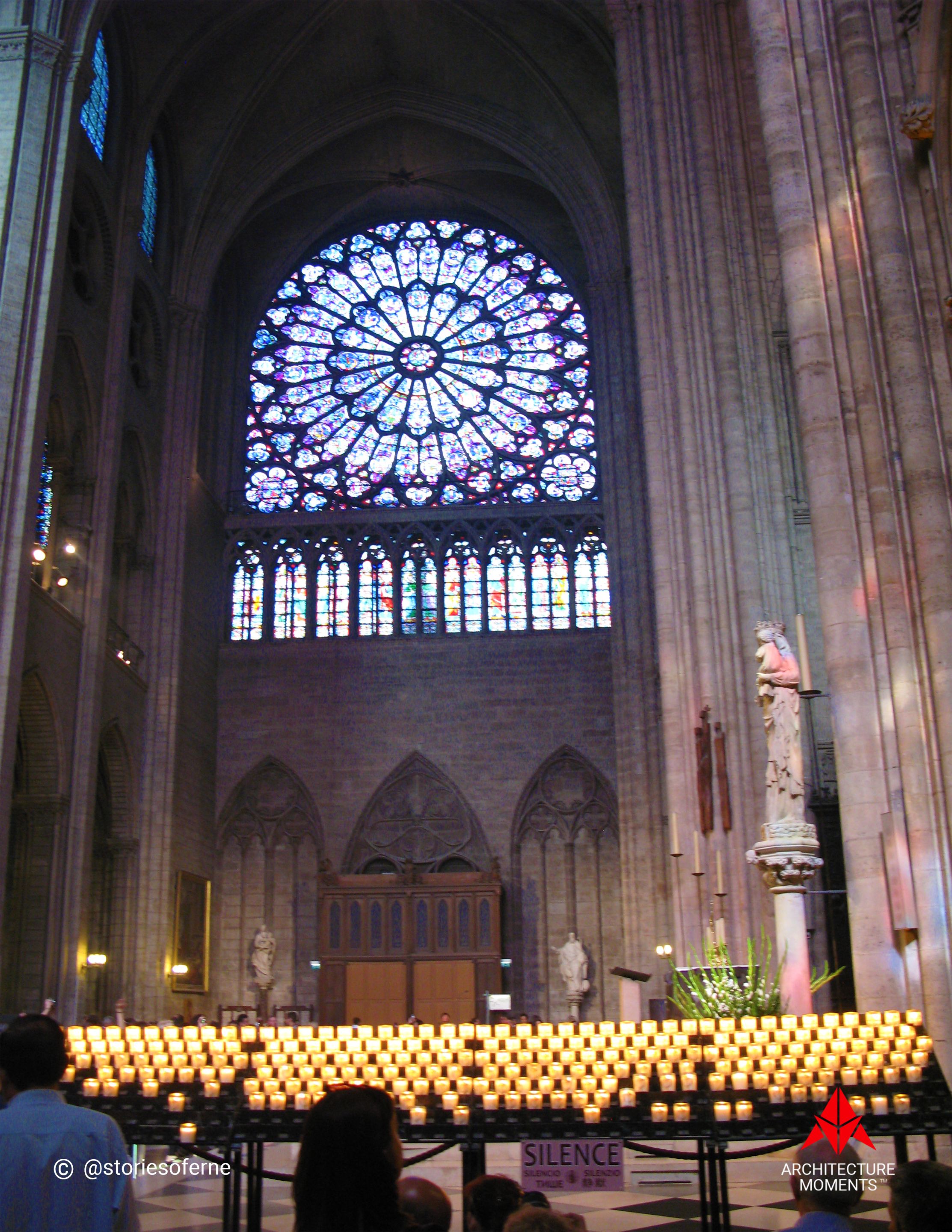
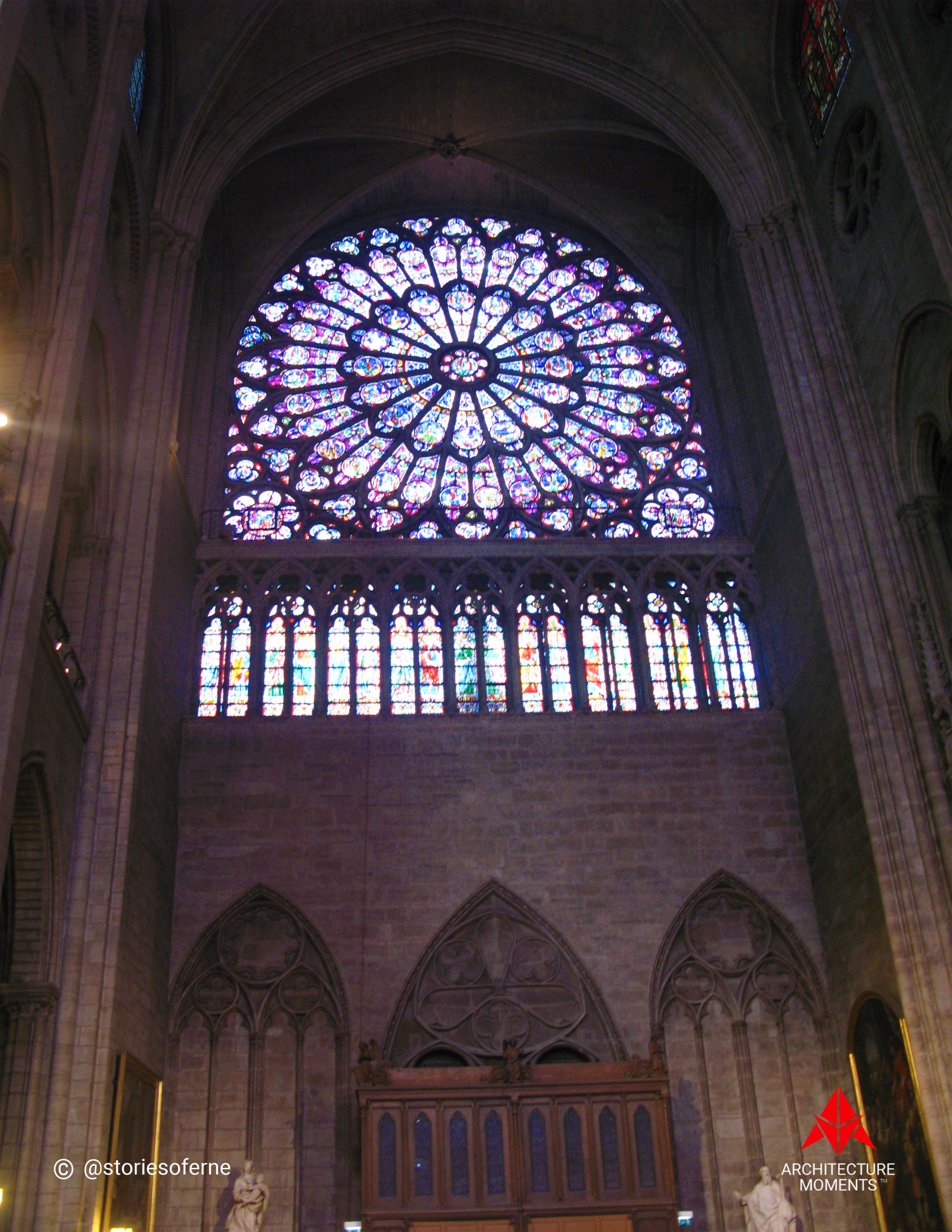
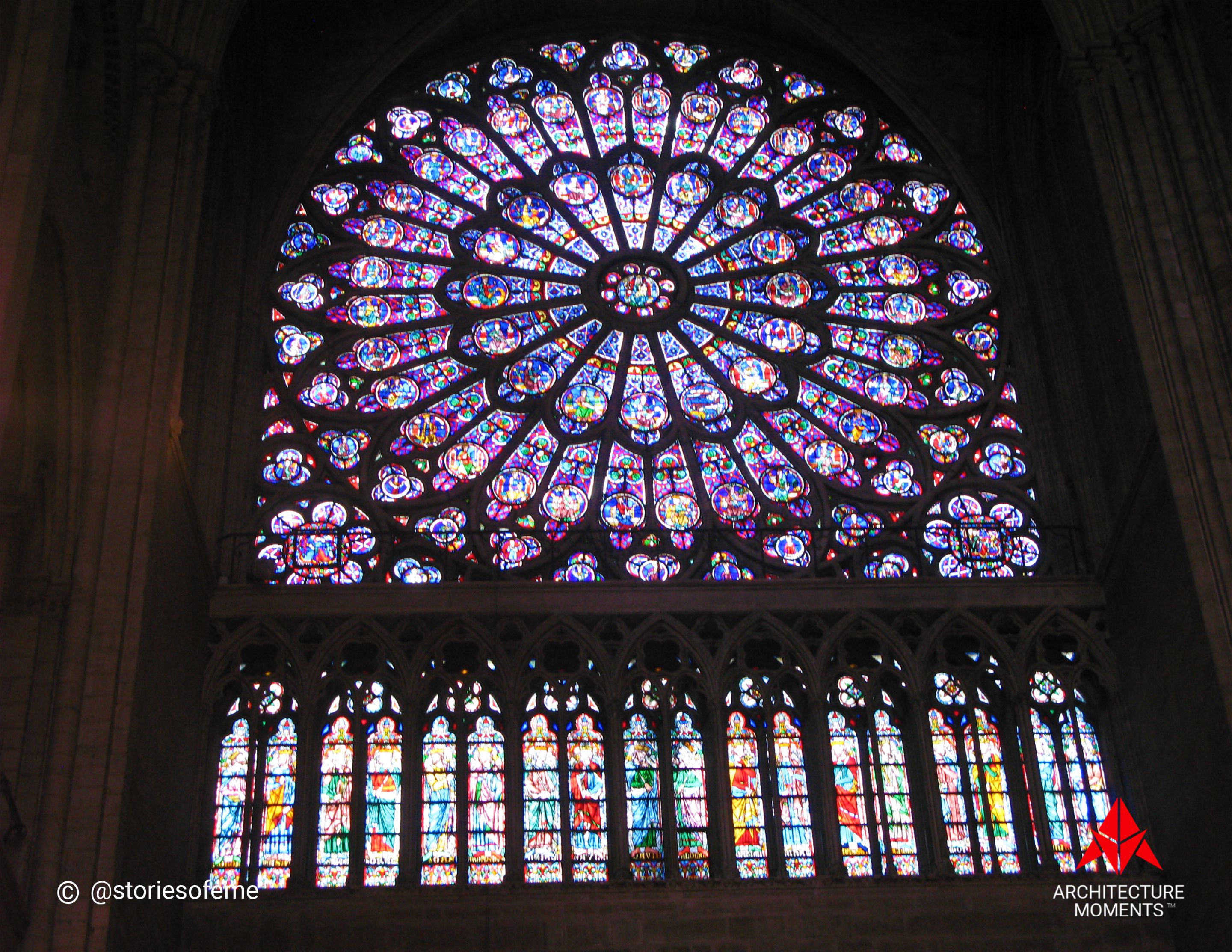
With an overall diameter of 12.9 meters (42 feet), the north and south rose windows were built from 1250 - 1260. The central glass core depicted Mother Mary embracing the Christ Child. And the surrounding colorful features of glass represent kings and prophets from the Old Testament of the Bible. It was truly a magical visual experience!
Remarkable Organs of Music
The musical organ within the upper western interior of the Notre Dame Cathedral is said to be the largest church instrument in France. With almost 8,000 pipes (some as old as the 18th century) in its entire assembly and carrying five keyboards, it has been officially declared as the biggest pipe organ in the country.
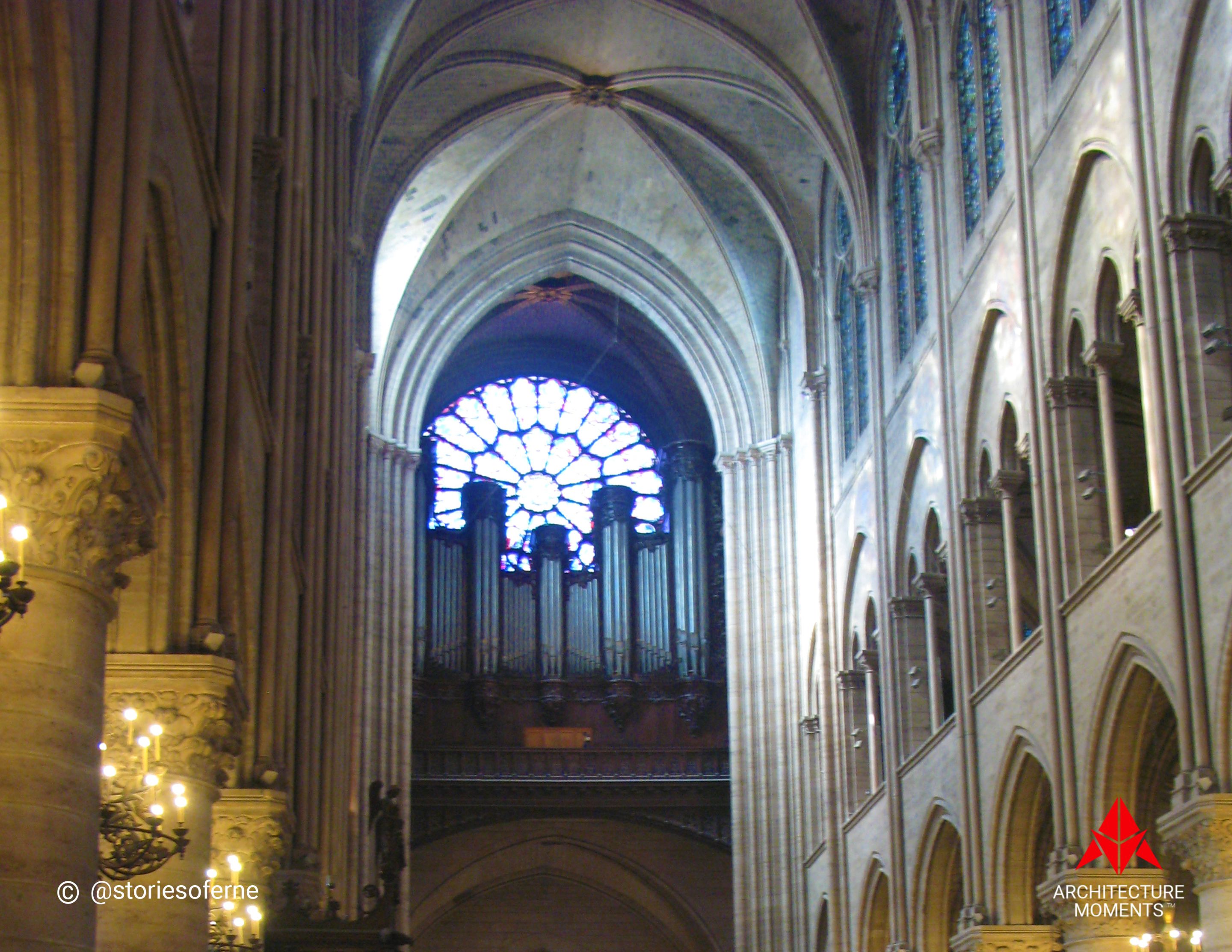
With some wooden surfaces partially damaged during the French Revolution, the organ underwent a full restoration in 2013 to commemorate the 850th anniversary of the cathedral.
Demystifying the Gargoyles and Chimeras
Oh gargoyles and chimeras! What else can I say about them? Well, aside from their cuteness (I know, not all of us find them adorable.), there are plenty of interesting fables, myths, and speculations surrounding these miniature statues of stone. But for now, let's just talk about their primary functions.
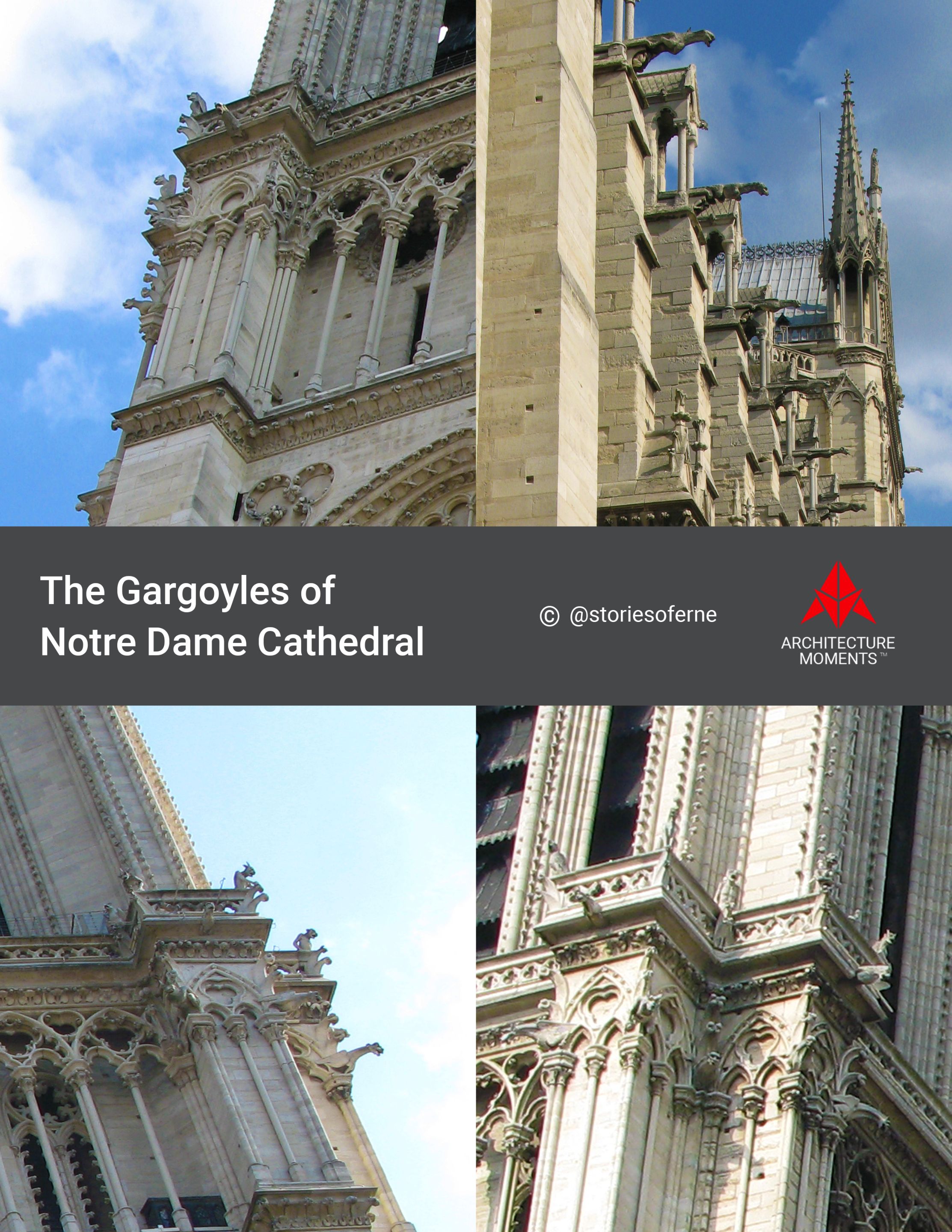
Essentially, the gargoyles had a practical reason as to why they were incorporated into the ledges and roof edges of the Notre Dame Cathedral. As a clever method of preventing rainwater from destroying the roof and walls, these aesthetically carved statues acted as downspouts, preventing excess rainwater from dripping on the monument's sides and draining them away from the building to prevent additional damage. The chimeras, on the other hand, were purely for decorative purposes.
Spire of Saintly Magnificence
If you zoom in on the cathedral's spire in one of the photos below, you'll notice a rooster-shaped object on its pointed apex. Have you seen it? And for your awareness, it's not placed there simply for ornamentation but, for a more religious implication. In 1935, three extremely small relics - a supposed piece from the Crown of Thorns, and a few particles of Saint Denis and Saint Genevieve (the patron saints of Paris), were safely locked inside the bird's metal body. As the story goes, it was believed to have served as a spiritual lightning rod, protecting churchgoers on the rooftop and inside the cathedral. This was obviously an eye-opener for me as I never knew about this the first time I gazed upon this towering spire.

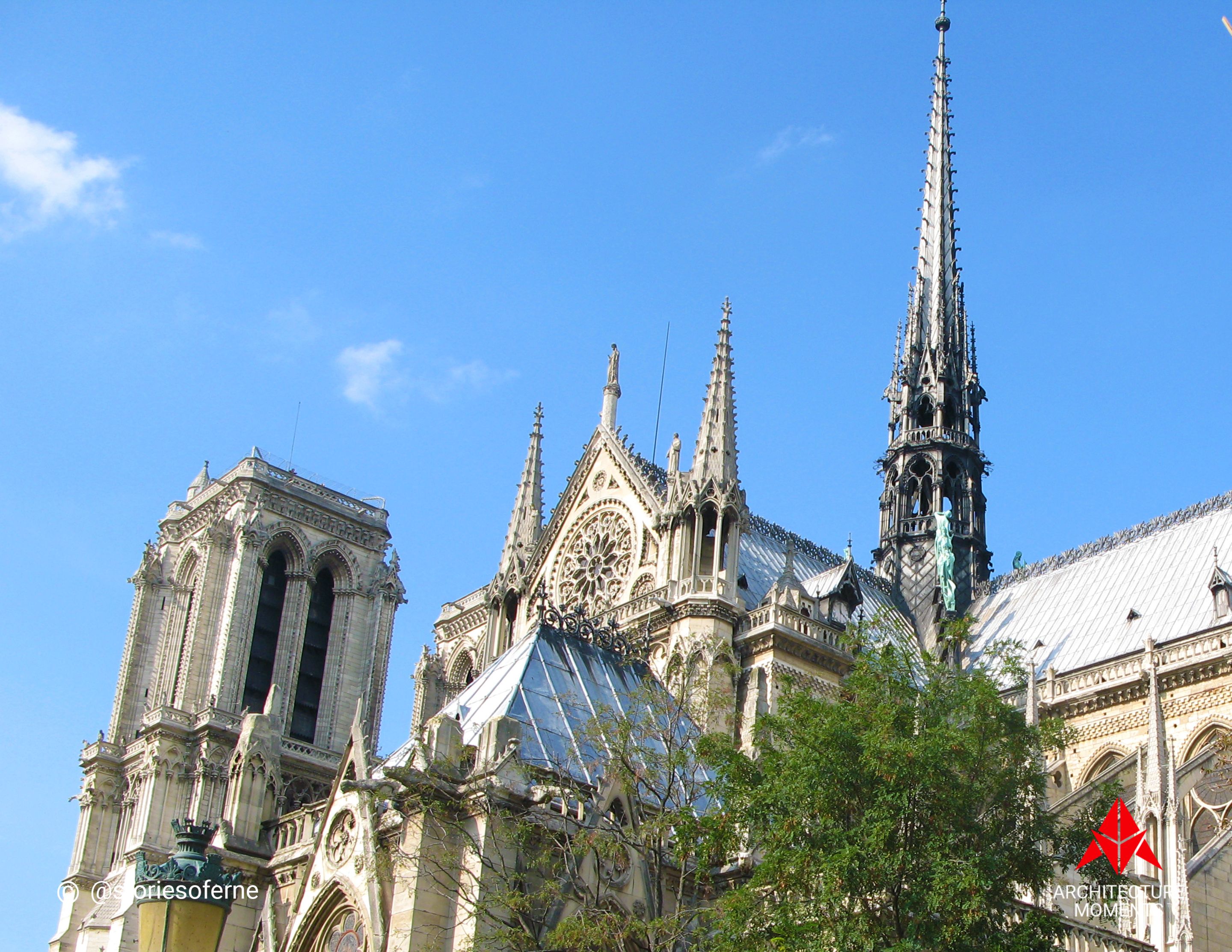
And here's something even more interesting. Did you know that a tiny hive of Buckfast bees also installed a home on the rooftop of the Notre Dame Cathedral? Honey that was manufactured here was not for their internal consumption but was intended for charitable works and was to be donated to the poor.
Marvels of the Flying Buttresses
Flying buttresses are basically sloping reinforcement beams that support massively heavy walls and ceilings purely made of stone, at the same time providing large open spaces below. And when it comes to the Notre Dame Cathedral, these prominent architectural features were also designed with unobstructed expanses at the bottom areas to allow for the construction of rose glass windows and other stained glass openings.
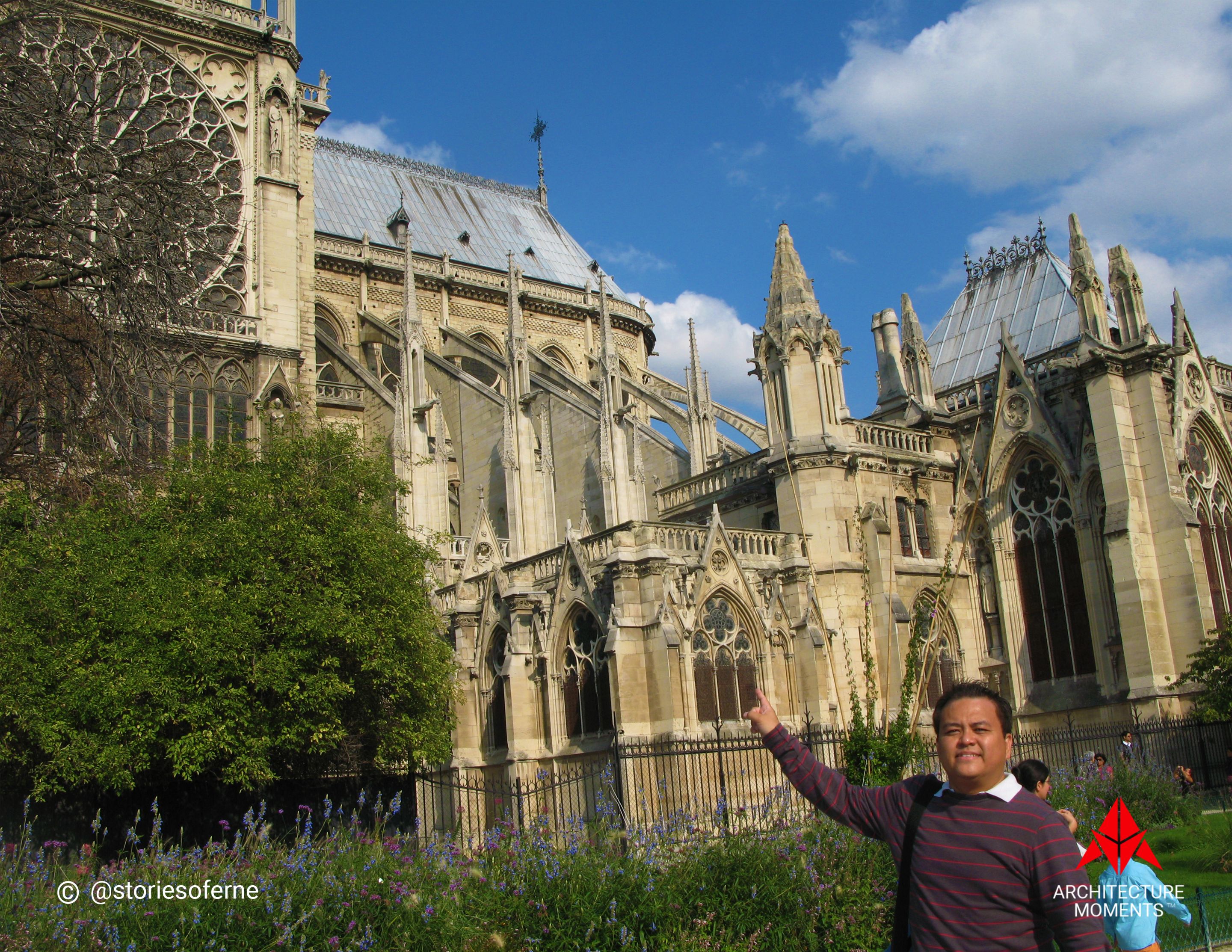
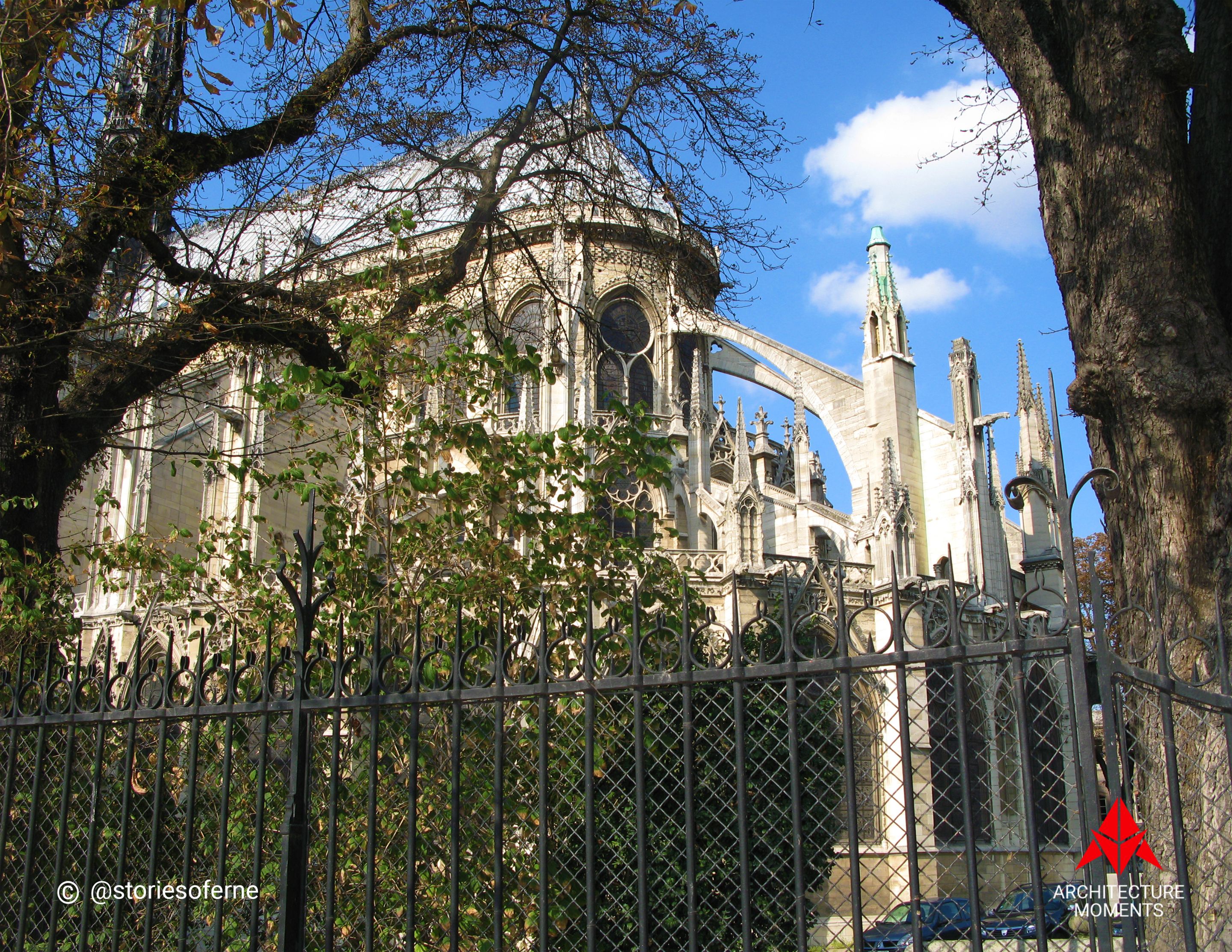
I had to transfer towards the rear portion (eastern hemisphere) of the cathedral to take a closer exterior view of these magnificent structural superstars. Aren't they a sensual treat to appreciate? To me, they resemble medieval knights in full armor, with capes plus swords in place, while standing tall and guarding their king (sorry for my abstract imagination, lol). As primitive as they may appear, these flying buttresses are still deployed today as supporting beams for enormous projects like stone stadiums and dams that do not incorporate steel materials in construction. However, with more extensive applications of reinforced concrete nowadays, these building components are currently not as popular as before.
Quest for the Heart of Paris
No need to search afar. Why? Because all routes in Paris point to the Notre Dame Cathedral. Meaning to say, this famed landmark is situated at the center of the metropolis. Literally. Today, there's an actual road marker installed in front of the church that serves as "Position 0" where all thoroughfares in the city lead to. How awesome is that?
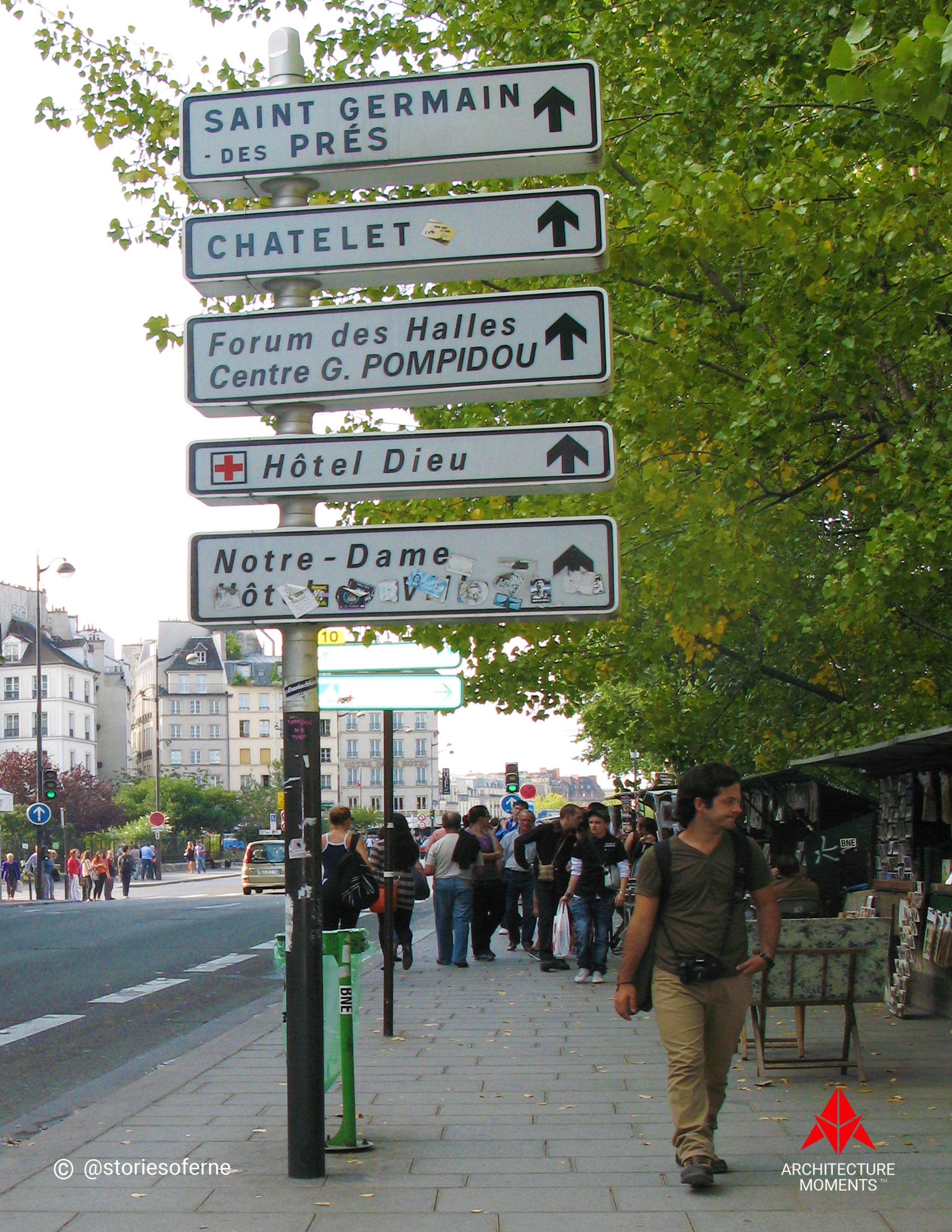
Furthermore, if the Notre Dame Cathedral was a human being, I'd compare her to a resilient survivor with extreme willpower. Imagine being adored, persecuted, damaged, tampered, ransacked, bashed, reconstructed, admired, criticized, hated, burned, renovated, revered, loved, time and again. Would you still possess the strength to remain standing if you were in her clothes? Despite all these dramatic tribulations in her lifetime encompassing nine centuries, she decides to be prepared for suffering, to remain alive and kicking, plus to ensure being fully equipped to face the myriad of challenges the future has in store for her.
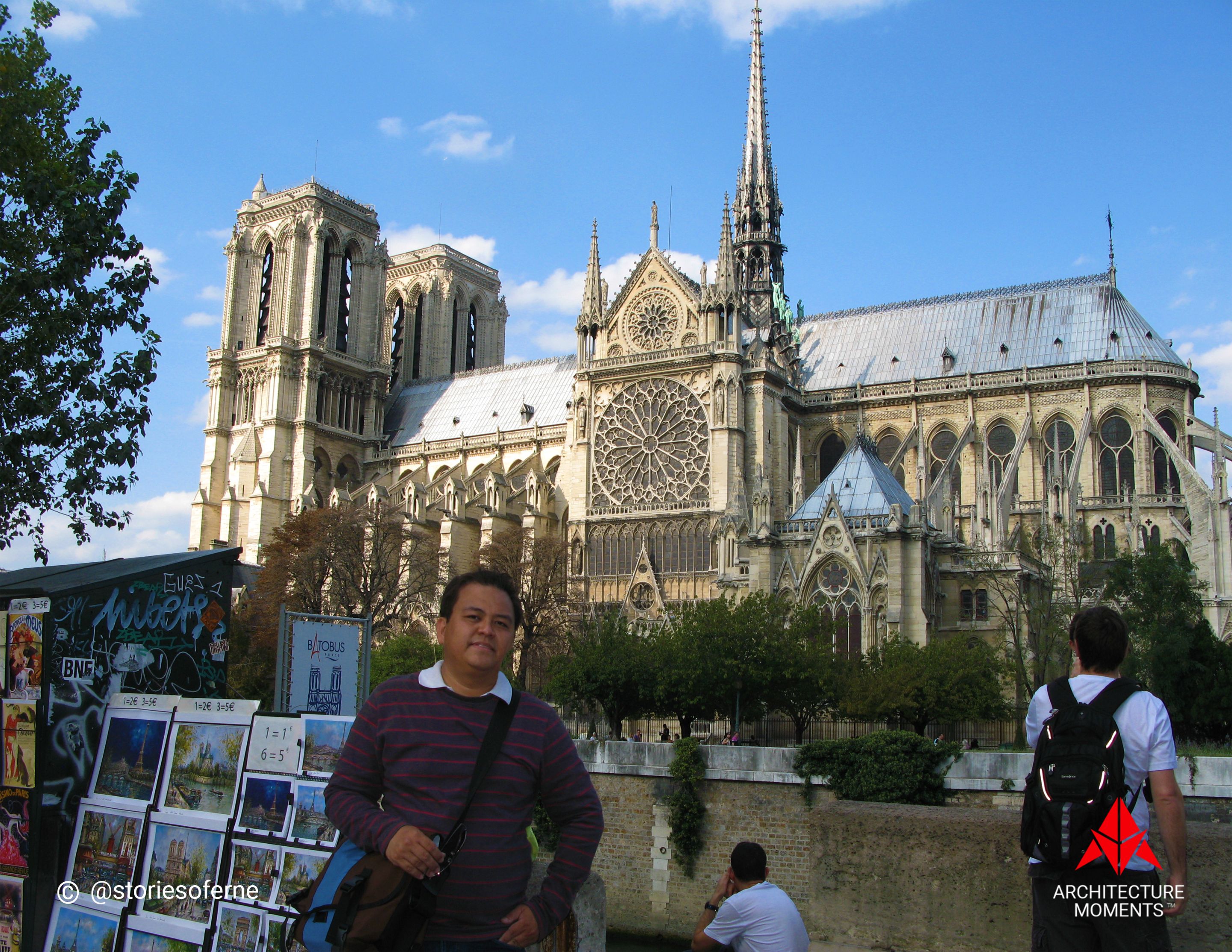
Why are we fascinated about preserving the architecture of past generations? What important lessons can we derive from our heritage buildings? Are these architectural legacies worthy examples that illustrate how we can design and build more sustainable environments? The search continues. And as long as we pursue creative solutions to address various problems in this specific industry, who knows? Perhaps the Notre Dame Cathedral holds the answers.
#Hive, do you think the Notre Dame Cathedral is an outstanding icon of architecture, deserving of our love? Let's talk about your ideas in the comments.



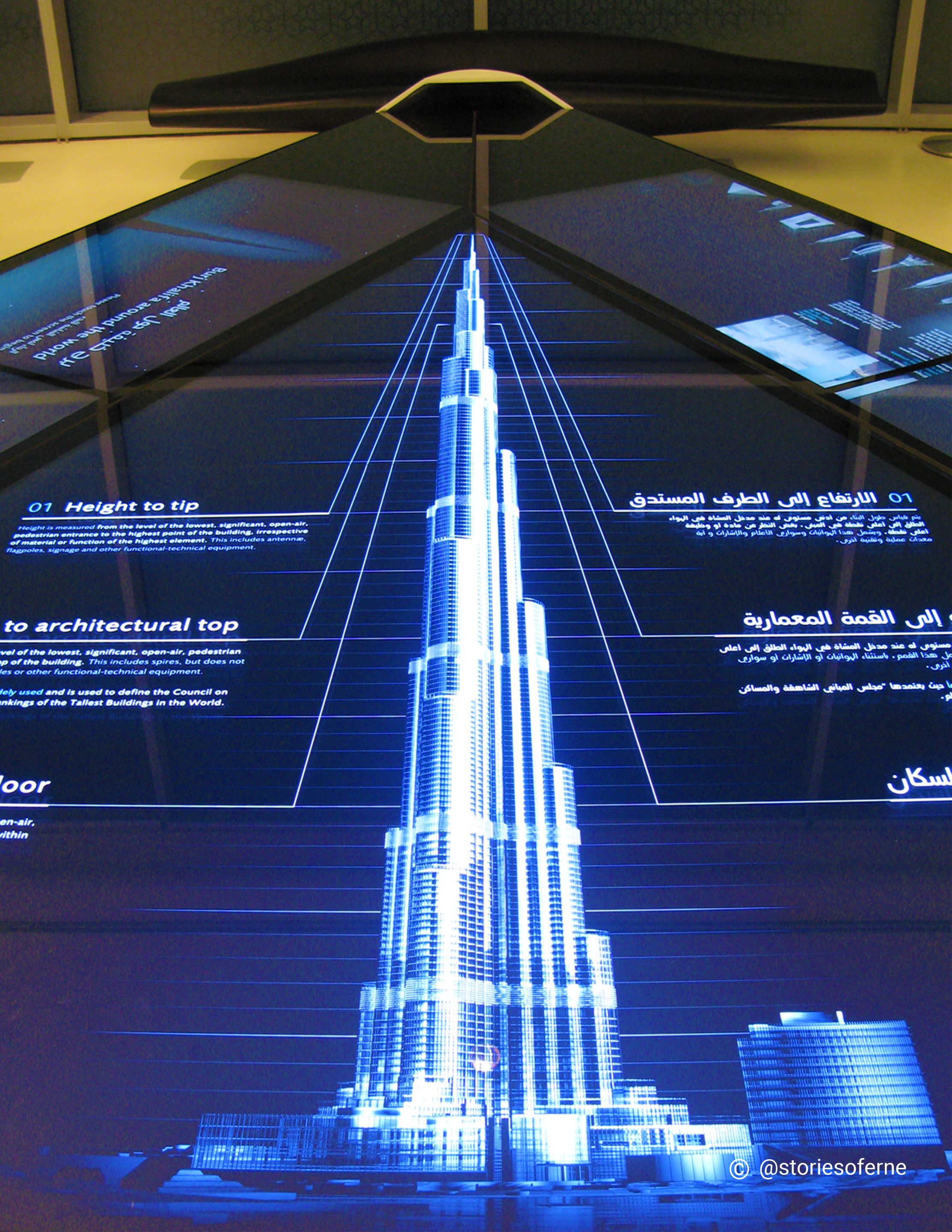

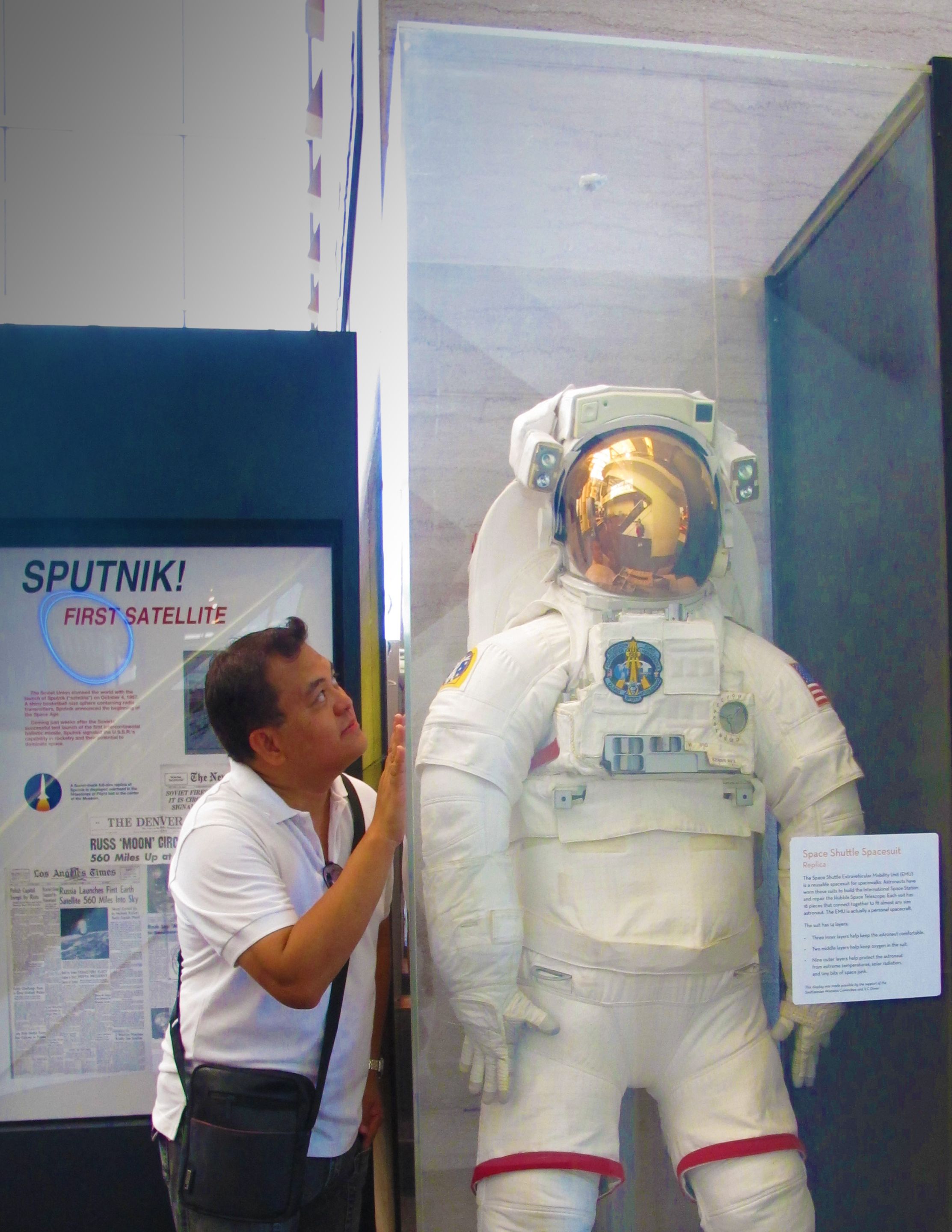




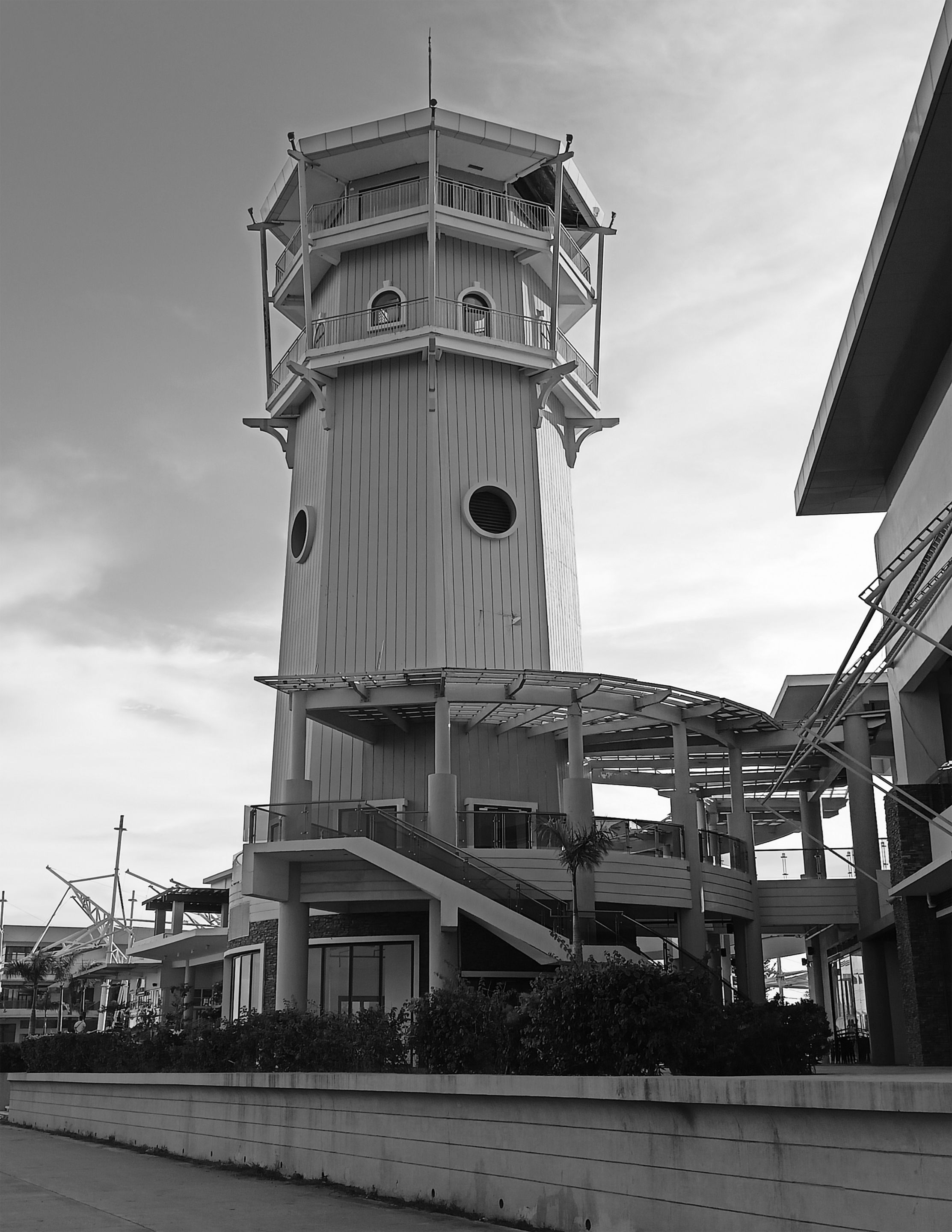

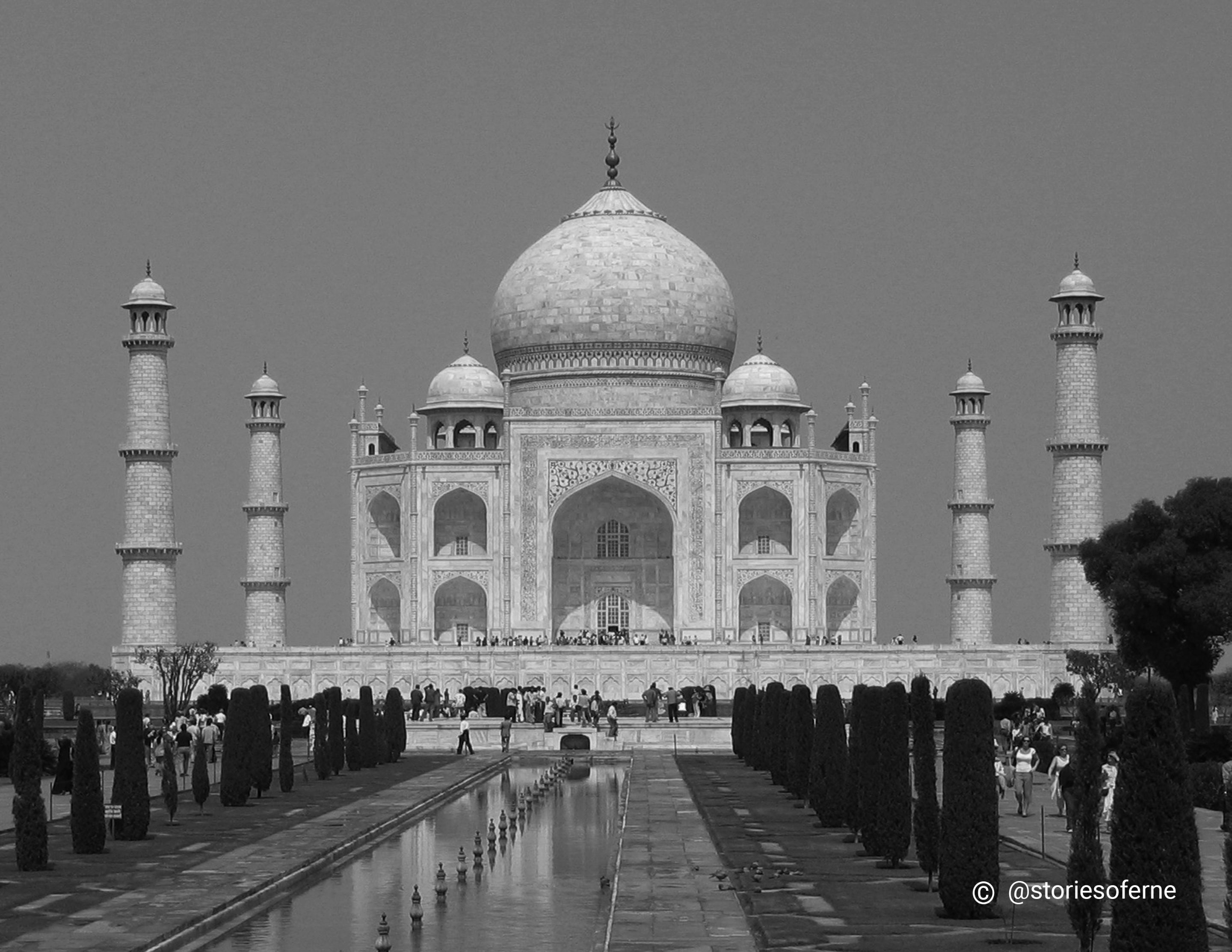
Comments